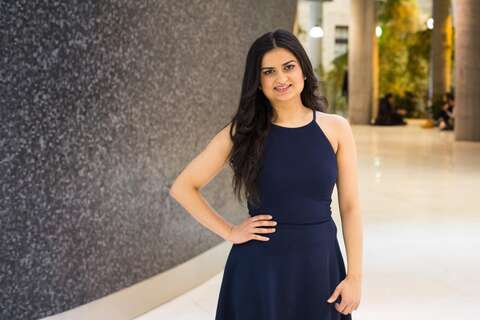Why I want to be a doctor: Meet five women in Medicine's Class of 22
Some were influenced by their experiences with ill family members. Others were inspired while working in health care.
Meet five women who chose to pursue a medical degree at the University of Toronto – and are now members of the Class of 22.
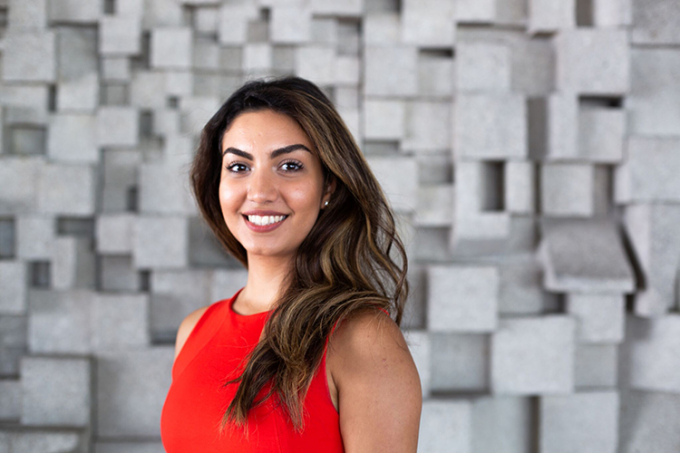
Mahsa Rahmany Rad
When I was 10 years old, my mother was diagnosed with breast cancer. I would spend my nights reading medical articles, trying to understand every word written about the disease.
Being so young, no matter how much I read, I still could not wrap my mind around my mother’s disease. I had no understanding of or appreciation for medical research until I realized it could save my mother's life. My commitment to learning the human body and treatments for breast cancer was what I thought could help save my mother's life. Soon, I realized I enjoyed drowning in the never-ending medical articles and research even after my mother was cured.
Taking care of her was a bittersweet experience, yet it showed me how much I enjoyed taking care of people and being the one they can rely on in such vulnerable circumstances.
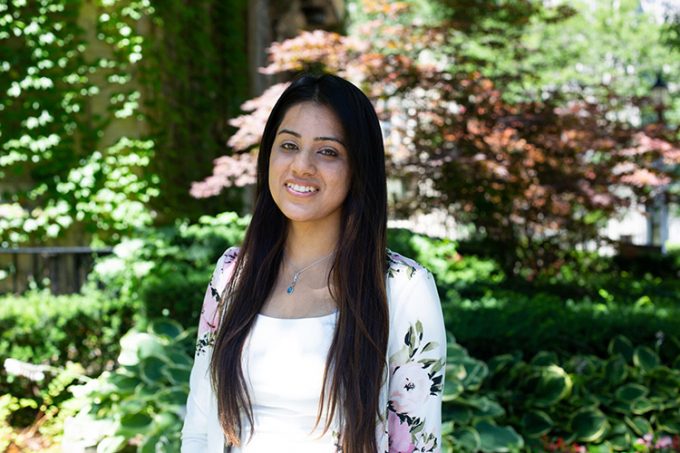 Muskaan Sachdeva
Muskaan Sachdeva
There wasn’t a single defining event in my life that made me decide to pursue a career in medicine. It was a gradual progression from living in rural India to exploring my interest in science throughout university.
I grew up in an underserved community in India, where I witnessed the limitations of not having an established health-care system in my community, waiting for months to see a doctor and travelling long distances with family to visit urban hospitals for basic health-care needs. I remember my grandparents often discussing if their health condition was “serious enough” to travel that far.
I moved to Kuwait, then Canada – first to Hamilton and then to Thunder Bay. The advanced and easily accessible health-care systems in Kuwait and Hamilton were a complete contrast to that of rural India and Thunder Bay. Recognizing these disparities, I aspire to work in small communities.
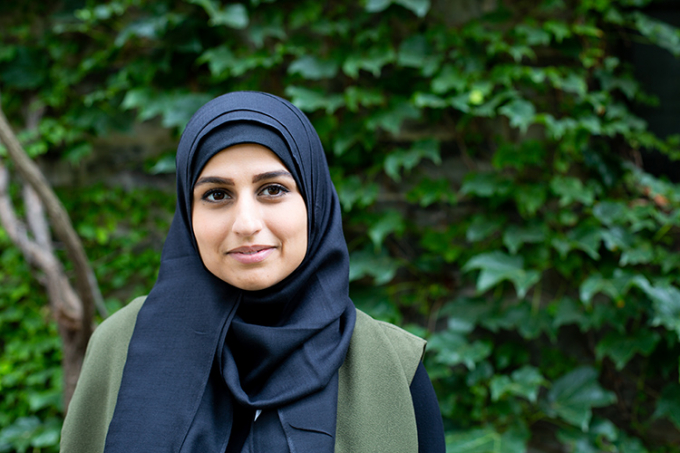 Hira Raheel
Hira Raheel
Having a sister with special needs, visits to the doctors were all too common. Those visits exposed me to both good and bad experiences with physicians.
I realized early on that a good health-care provider can make the most difficult situation easier to manage for the patient and their family. To this day, my family remembers all the exceptional doctors who treated my sister. I knew I wanted be a doctor who could make a lasting impact on the lives of my patients.
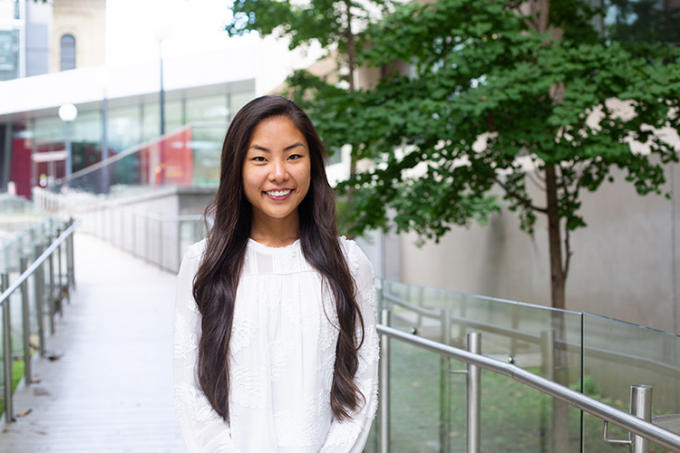 Cindy Kang
Cindy Kang
I don’t think it was an “aha!" moment for me, but rather a combination of didactic, hands-on, and observational experiences in the sciences, patient care and clinical settings. Since undergrad, I’ve always been interested in human physiology, cell biology and psychology. These disciplines led me to develop an appreciation for the beauty and complexity of the human body and mind. What was even more interesting to me was how we can apply these subjects from the bench to bedside, so I volunteered at various hospitals to experience patient care first-hand, and I loved it.
I pursued medical research and shadowing opportunities – I really wanted exposure to all aspects of medicine. I became a research assistant at various hospitals throughout Toronto and shadowed a cardiovascular surgeon at Toronto General Hospital who showed me what it's really like being a doctor and how rewarding the profession is. That's when I finally knew that it was right for me.
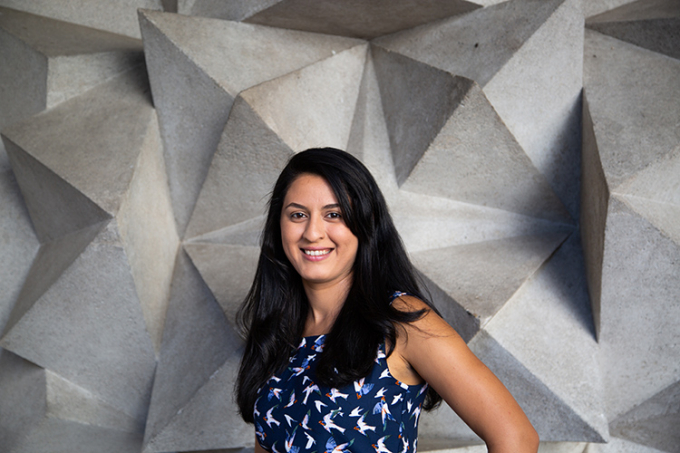 Sahar Zarabi
Sahar Zarabi
It was during undergrad that I realized how truly rewarding medicine is. As part of our undergrad curriculum, we enrolled in project courses and mine was in emergency medicine. I started my course with very little knowledge of medicine, but this changed quickly. I regularly went to the ward to talk to patients, their families and the health-care team. Many patients were acutely ill, and having the privilege of talking to them and helping them in their most vulnerable state was truly rewarding.
One memorable experience was when a doctor was trying to put braces on the hand of an older woman with a broken wrist. She was in a great deal of pain and I watched how kind, gentle and thoughtful the doctor was in easing the patient’s emotional and physical distress. Moments like these inspired me to pursue medicine.
Read more profiles of the Faculty of Medicine's first-year students

Optimize this page for search engines by customizing the Meta Title and Meta Description fields.
Use the Google Search Result Preview Tool to test different content ideas.
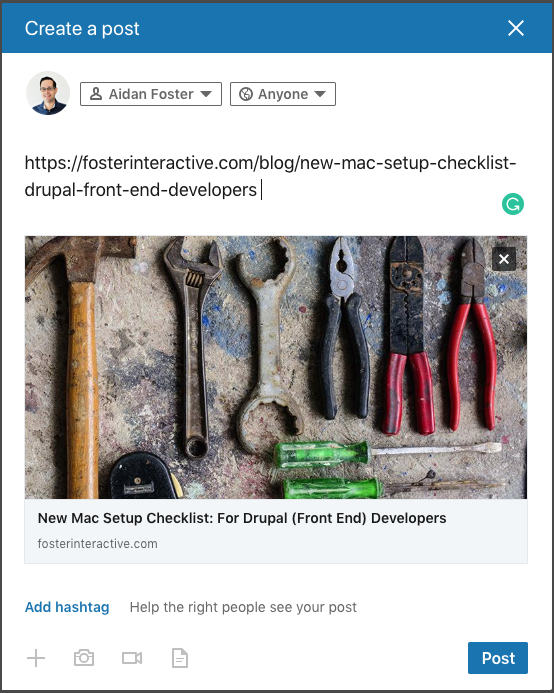
Select a Meta Image to tell a social media platform what image to use when sharing.
If blank, different social platforms like LinkedIn will randomly select an image on the page to appear on shared posts.
Posts with images generally perform better on social media so it is worth selecting an engaging image.
Julia Soudat
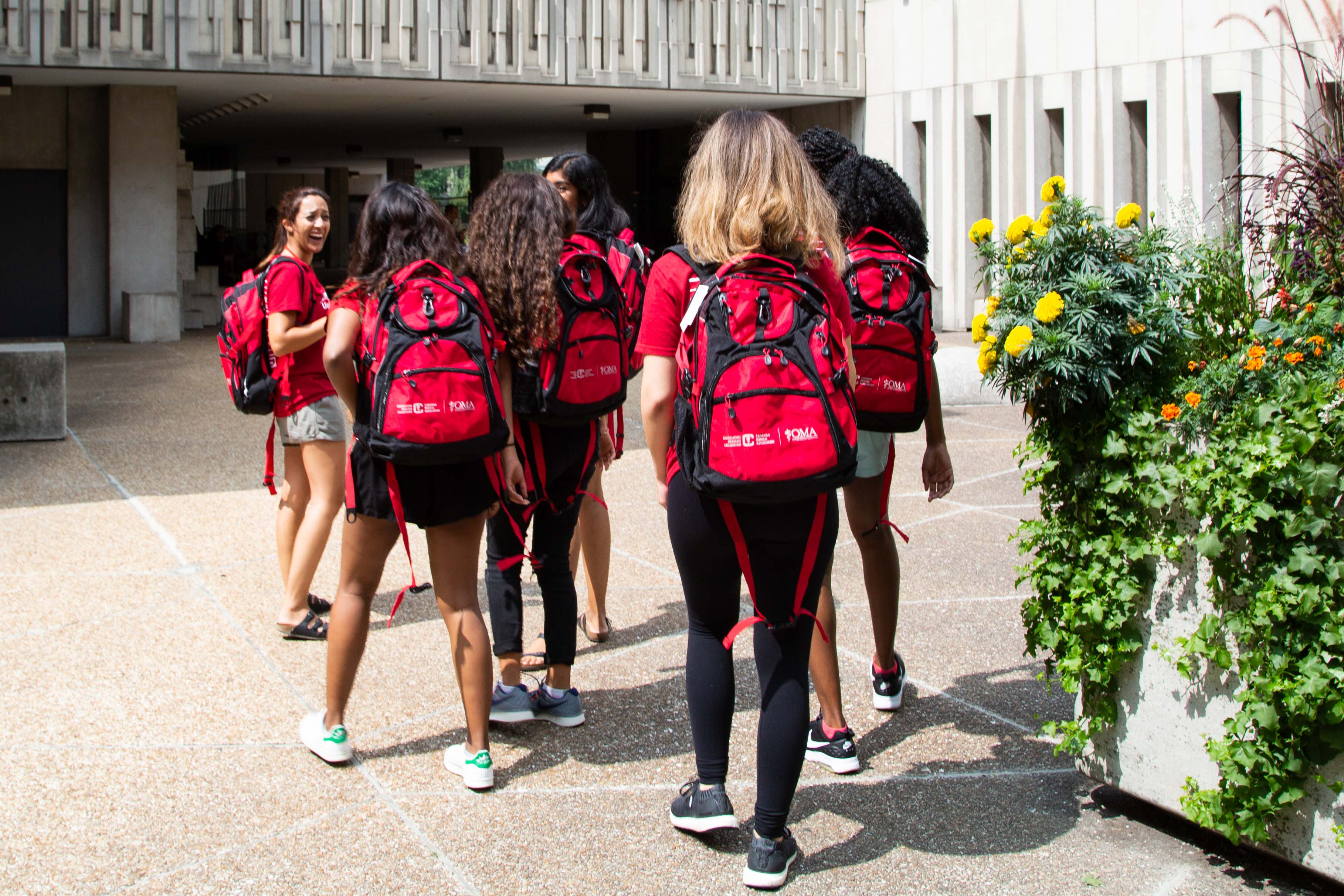
Faces of U of T Medicine: Kevin Wang
 For Kevin Wang, the idea of meeting some of his scientific heroes (and Nobel Laureates) had been a dream — until last month. The recent U of T MD/PhD graduate was among the first five Canadian scientists to be nominated to attend the Lindau Nobel Laureate Meeting. The annual event brings together about 40 Nobel Laureates and 600 undergraduate students, PhD candidates and post-doctoral researchers from 84 countries around the world. The idea is to foster dialogue and share knowledge and ideas across generations, cultures and disciplines. Wang, who began his residency in Internal Medicine here in Toronto earlier this month, shared his experience with U of T Medicine writer Erin Howe.
For Kevin Wang, the idea of meeting some of his scientific heroes (and Nobel Laureates) had been a dream — until last month. The recent U of T MD/PhD graduate was among the first five Canadian scientists to be nominated to attend the Lindau Nobel Laureate Meeting. The annual event brings together about 40 Nobel Laureates and 600 undergraduate students, PhD candidates and post-doctoral researchers from 84 countries around the world. The idea is to foster dialogue and share knowledge and ideas across generations, cultures and disciplines. Wang, who began his residency in Internal Medicine here in Toronto earlier this month, shared his experience with U of T Medicine writer Erin Howe.
Is there anyone you were particularly excited to meet at Lindau?
This year, the 68th Lindau Nobel meeting, took place on the beautiful islands of Lindau and Mainau in Germany, featured laureates from the disciplines of medicine and physiology. As a cancer researcher and aspiring oncologist, I was particularly excited to meet Dr. Harold Varmus and Dr. Michael Bishop, who shared the Nobel prize in 1989 for their discovery of the first human oncogene, c-Src, a type of gene that has the potential to transform a cell in to a tumour cell. Their pioneering work ushered in a new era of cancer research, a field that I worked in and contributed to over the course of my MD/PhD training. I had the opportunity to meet and discuss with both laureates on the future of cancer research.
How exciting was the opportunity to meet and speak to Nobel Laureates?
It was truly a once in a lifetime experience. A definite highlight for me was interacting with Nobel Laureates, often in intimate settings. Through various formats including lectures, panel discussions, master classes and science walks, the meeting encouraged idea sharing between the Nobel Laureates and attendees. What I found most rewarding were the small group discussions where generations of scientists gathered in a small circle to share lessons learned over illustrious careers in scientific discovery. More than just the eureka moments, I had a glimpse into the triumphs and failures that led to their Nobel prize winning work.
As one of hundreds of guests at Lindau, what was it like to meet others who make up the ‘next generation of leading scientists’?
It was definitely a humbling experience. I thank my PhD supervisor, Professor Michael Taylor, and my sponsoring organizations, the Canadian Student Health Research Forum, Canadian Institute of Health Research and the Department of Laboratory Medicine and Pathobiology for this opportunity. What was most amazing about a meeting of this scale is that no matter what people’s language, gender, ethnicity or political affiliations were, everyone had a common goal — to advance scientific knowledge. Science allows us to search for the truth and understand who we are and our place in this world.
What do you see as the larger impact of these meetings? Will you keep in touch with any of the other young scientists you met?
I think meetings like this go beyond the exchange of scientific ideas and inspire young scientists to engage in our greater community. Many of the talks not only touch upon the scientific method, but also upon how science can be disseminated around the world. As scientists and medical doctors, we have a social responsibility to engage and educate the public. If more of us talk about issues like the benefits of vaccines or the harms of greenhouse gas emissions, perhaps more of the public will be able to get on board. A personal bonus from attending this meeting is that I had the privilege of meeting many brilliant young scientists with whom I’ve become great friends.
The guiding idea for this year’s meeting was that scientific evidence is an answer to ‘fake news’ — having been at the meeting, how has your thinking about science communications changed?
It was interesting to see how this odd concept of ‘fake news’ has spread from the US and espoused a toxic environment globally. On the last day of the conference, there was a panel discussion on ‘Strategies for Science Communication in a Post-Factual Era’. One of the panelists, Nobel Laureate Steven Chu, the former US Secretary of Energy, highlighted the importance of finding common ground when speaking with non-scientists. We live in an age where opinions are easily confused as facts, especially through social media. The traditional view that knowledge comes from a few individuals in positions of authority is no longer relevant today. I believe this creates an exciting opportunity for scientists to educate and learn from the public by avoiding jargon and using a common language to communicate.
What was the best part of your experience at the Lindau Nobel Laureate Meeting?
I thoroughly enjoyed learning about other disciplines relevant to medicine. It was fascinating to learn about the work that led to cryo-electron microscopy and characterization of G-protein coupled receptors, a discovery that led to most of the drugs we prescribe today. Perhaps the coolest moment was learning about how the structure and function of ribosomes was uncovered by Ada Yonath and colleagues, who won the Nobel prize in Chemistry in 2009. Her work today focuses on leveraging structural information to design new antibiotics to target the bacterial ribosome. I remember first learning about ribosomes as the engine of life in middle school — to hear the person who discovered it talk about the decades of research that led to that discovery was truly inspiring!

Optimize this page for search engines by customizing the Meta Title and Meta Description fields.
Use the Google Search Result Preview Tool to test different content ideas.

Select a Meta Image to tell a social media platform what image to use when sharing.
If blank, different social platforms like LinkedIn will randomly select an image on the page to appear on shared posts.
Posts with images generally perform better on social media so it is worth selecting an engaging image.

Students Delve into Cancer Experience, With Patients as Teachers
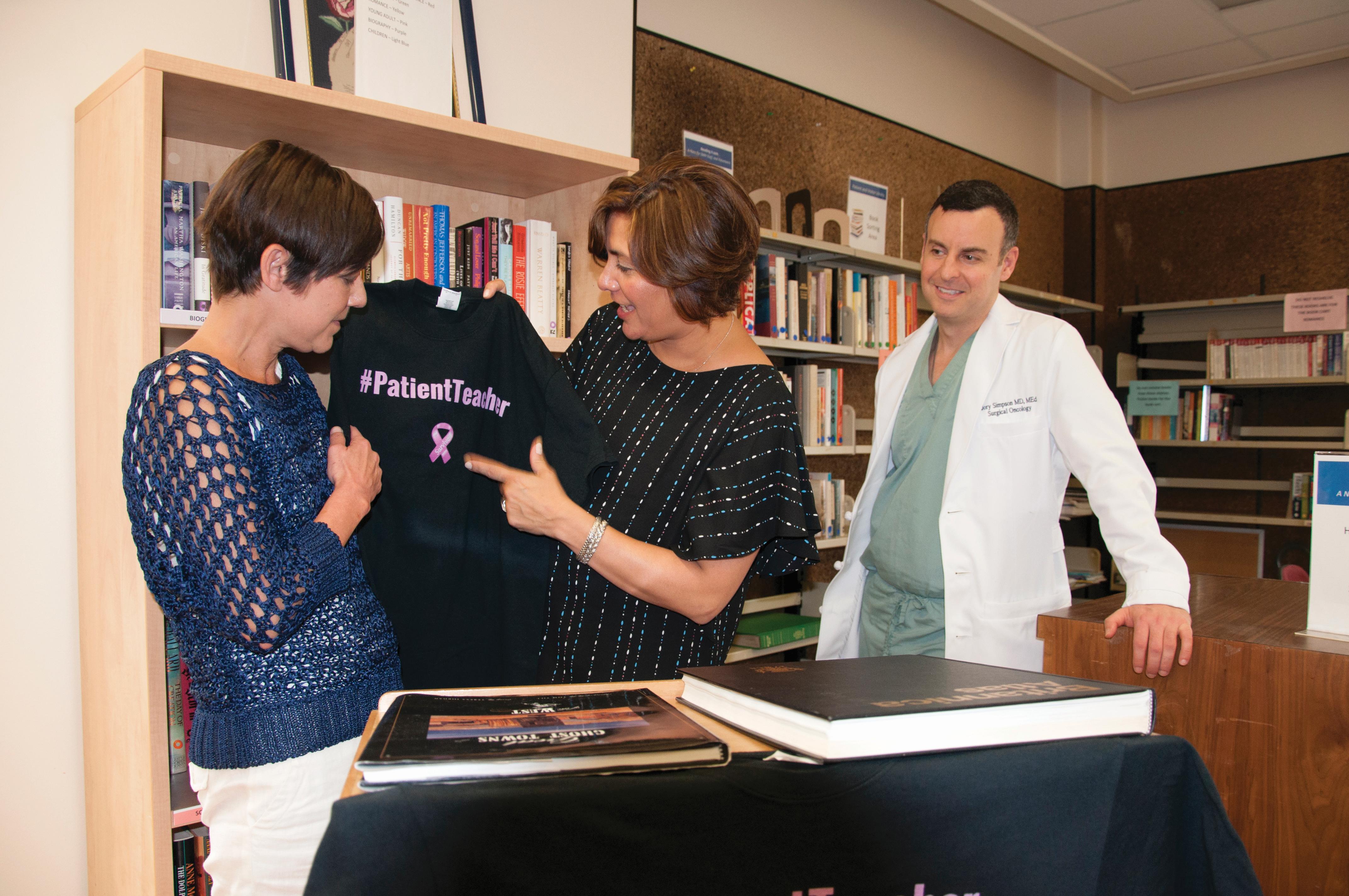 How can doctors limit patient anxiety before surgery? What are the lasting impacts of surgery on quality of life? What can doing art teach medical students about health care? A new program at the University of Toronto aims to answer these questions by bringing together future physicians and patients willing to share their experiences with cancer.
How can doctors limit patient anxiety before surgery? What are the lasting impacts of surgery on quality of life? What can doing art teach medical students about health care? A new program at the University of Toronto aims to answer these questions by bringing together future physicians and patients willing to share their experiences with cancer.
The Patient as Teacher program launched last fall through the university’s Fitzgerald Academy in partnership with St. Michael’s Hospital. Third-year medical students engage in interactive workshops with patients and each other over eight-week surgery rotations, and reflect on their learning by creating art.
Breast surgical oncologist Jory Simpson started the program, and he recently launched a website that offers resources for its students and patients, along with some of the art it has inspired. Simpson is an assistant professor in U of T’s Department of Surgery and director of undergraduate education in the division of general surgery. He spoke with writer Jim Oldfield about the program.
How did this program come together?
About a year and a half ago, I was talking with Professor Ori Rotstein (surgeon-in-chief at St. Michael’s) about how we could improve the surgery clerkship for medical students, by bringing in patients and presenting a broader perspective on what surgeons do. We had many ideas but they morphed into this one, which I ran past Arno Kumagai, vice chair of education in the Department of Medicine. He had started something similar at the University of Michigan and he thought it was a great idea. We piloted it for one night and last year enrolled 50 students. This coming academic year, we will also run at Sunnybrook and University Health Network, so more than three-quarters of surgical clerkship students will do the program.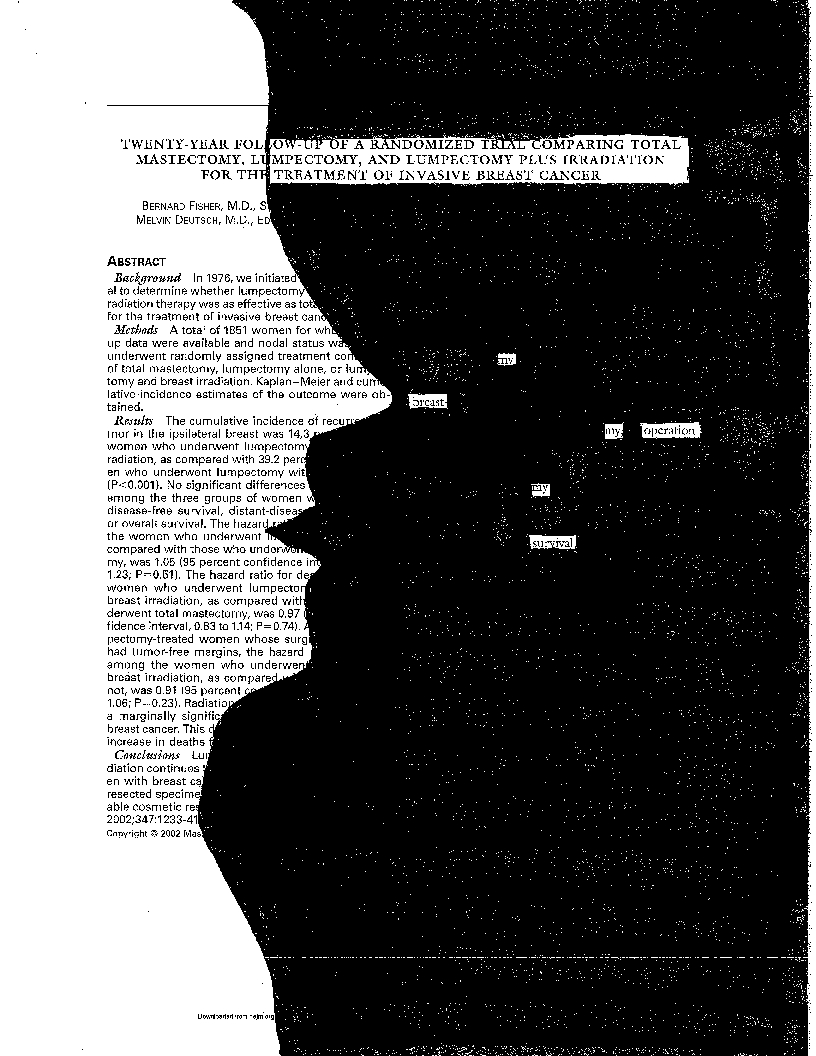
That’s amazing growth. What are students getting out of the program?
They find it really worthwhile. They gain a deeper understanding of the patient experience, which is very much in line with the focus on person-centred care and patient/provider partnerships in the new medical school curricula. And some students start the rotation with misconceptions about the role of surgeons — we’re often seen as technicians, cold and aloof, who only have a few brief encounters with patients. But in hearing from patients, students realize we are much more involved in patients’ lives and that we follow them over time. This is a valuable insight, even for students who know they don’t want to get into surgery, because they can see how surgery connects with other specialties and impacts the patient’s broader experience of cancer.
Have many patients come forward as teachers?
This past year we had 10 patient volunteers, while next year (2018-2019) we will have approximately 30 patients across the three sites, limited only by the number of sessions. Breast and other cancer survivors take such ownership and pride in their journey and recovery, and so many of them want to share their stories — they find it very empowering. They also connect with other patient volunteers and develop an even deeper appreciation of the doctor-patient relationship. I think the early success of the program is due in part the courage of our patient population and their willingness to speak out.
Are you measuring the impact of the program?
We’re working on an evaluative study right now. We’ve done focus groups with all the students and we’re measuring the program’s impact on them going forward. We also do individual interviews with patient teachers. Once we have concrete evidence, we hope other universities will take it up. We’re trying to make it easy for other centres to do that, and the website is one part of that effort. At this time next year, I expect at least one other university will have a similar program, and we’ve received a lot of positive feedback from colleagues in surgery and education across the country.
What was the biggest challenge in growing the program?
The logistics. There many to work out. But we’ve had great support from the education coordinators at all three academies, we wouldn’t be where we are today without their work. We’ve also had strong institutional support, with funding from U of T and St. Michael’s, and a private donor. I’m just thrilled with how it’s all come together. Students are very receptive to learning in this environment, and I think you can see their engagement in the art they produce. It’s incredible. We’ve heard music and poetry, and we’ve seen some really impressive visual concepts and images. It’s deep and inspirational stuff.

Optimize this page for search engines by customizing the Meta Title and Meta Description fields.
Use the Google Search Result Preview Tool to test different content ideas.

Select a Meta Image to tell a social media platform what image to use when sharing.
If blank, different social platforms like LinkedIn will randomly select an image on the page to appear on shared posts.
Posts with images generally perform better on social media so it is worth selecting an engaging image.

Faces of U of T Medicine: Sujen Saravanabavan
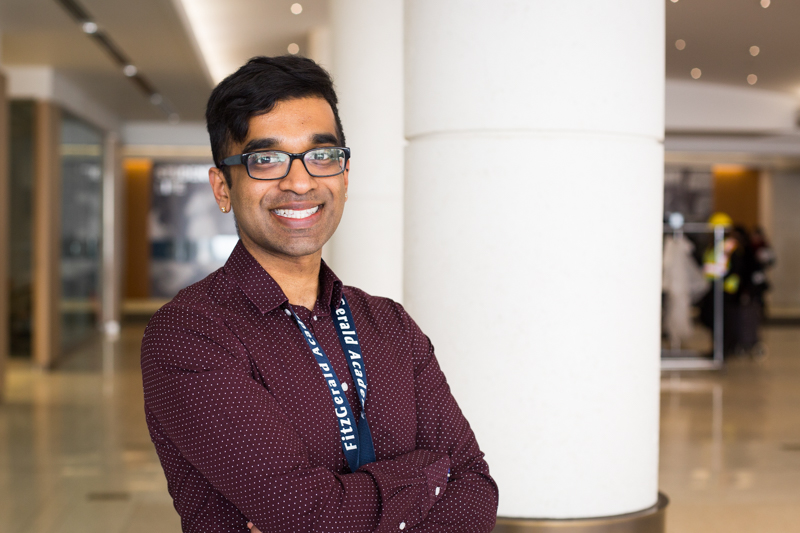 Sujen Saravanabavan is passionate about helping others. In addition to his medical studies, the third-year student is also an active member of various student leadership groups. This weekend, he’ll be presented with an MD Financial Management Student Leadership Award at the Canadian Federation of Medical Students (CFMS) Spring General Meeting in Halifax. The award recognizes medical students who have made innovative contributions to their schools and communities. He recently told writer Erin Howe about his volunteer work and plans for the future.
Sujen Saravanabavan is passionate about helping others. In addition to his medical studies, the third-year student is also an active member of various student leadership groups. This weekend, he’ll be presented with an MD Financial Management Student Leadership Award at the Canadian Federation of Medical Students (CFMS) Spring General Meeting in Halifax. The award recognizes medical students who have made innovative contributions to their schools and communities. He recently told writer Erin Howe about his volunteer work and plans for the future.
You’re the senior U of T representative for the CFMS, a member of the executive committee for Ontario Medical Students Association and you’ve also been the Vice President of External Relations for U of T’s Medical Society. What have you enjoyed about taking on these kinds of roles?
I had the opportunity to be Vice President External for my first two years of medical school. It was one of the most rewarding and challenging experiences of my time as a pre-clerk. I loved working with passionate colleagues, the process of understanding what advocacy means to me personally and seeing a vision through to completion. One example is starting the Toronto Political Advocacy Committee through the Medical Society, which ended up doing some great work in the City of Toronto.
How will these roles help you prepare for your career?
I spent a lot of time deepening my understanding of what advocacy means to me and what types of roles I’d like to take on in the future. Through this experience and others, I’ve become passionate about the social determinants of health. I hope to have a career that involves clinical medicine, policy and advocacy and this creates a strong foundation and perspective.
What have been the best parts of clerkship so far?
There have been many amazing things about clerkship! The best parts have been the moments when I feel I’m positively impacting a patient’s life. In one experience, I worked with a patient who had a particularly challenging social circumstance, which included living in a shelter. Through our encounter, I realized he had a wealth of ideas to support others in similar circumstances. I encouraged him to write a letter to his local government official to express his ideas and concerns. Together, we found his city councillor and created a plan for the patient to write a letter to them. I didn’t have the opportunity to follow-up with him, but before leaving that appointment the man thanked me for believing in him. I like to think he actually wrote that letter and that this experience helped encourage him.
I’ve also enjoyed the personal growth that happens as a clerk. Don’t get me wrong — it’s also the most challenging part. Being constantly evaluated both clinically and through testing can lead to many emotionally challenging situations. But constantly being pushed to your limits made me better. It’s pretty rewarding to get at least some of the questions your senior asks correct!
Where do you see yourself in 15 years?
I’m interested in pursuing something where I work with children, both clinically and in terms of my advocacy. I’d also love to be involved in teaching future medical students. While work is important to me, hopefully I’m balanced in terms of my personal life. I really want to have a family and maintain the friendships I’ve made so far.
What do you enjoy doing in your spare time?
I wish I had something that makes me look incredibly smart and thoughtful, but I honestly love playing video games. I also really enjoy practicing close-up magic (something I hope to incorporate into my clinical medicine) and spending time with my friends.
You also help teach dance to kids with autism — can you tell me more about this?
I first learned to dance — specifically popping, clown walking and tutting — when I was fourteen by watching YouTube videos. I had no idea it would lead to helping teach a dance class many years later! I did this for nearly two years during my pre-clerkship years. There are so many things I loved about this experience. Teaching children with autism was a learning experience for me, but the part I enjoyed the most was simple — just watching the kids have fun with dance. Kids find pleasure in such simple things. Seeing them engage with dance and witnessing dance bring them closer to each other and their families was incredible!

Optimize this page for search engines by customizing the Meta Title and Meta Description fields.
Use the Google Search Result Preview Tool to test different content ideas.

Select a Meta Image to tell a social media platform what image to use when sharing.
If blank, different social platforms like LinkedIn will randomly select an image on the page to appear on shared posts.
Posts with images generally perform better on social media so it is worth selecting an engaging image.

Medical Students March For a Permanent Fix to Residency Shortages
 Dozens of medical students from U of T and across the province gathered at Queen’s Park on April 25 to press political leaders for a long-term solution to the lack of residency spots for graduating medical students.
Dozens of medical students from U of T and across the province gathered at Queen’s Park on April 25 to press political leaders for a long-term solution to the lack of residency spots for graduating medical students.
Although 92 per cent of U of T medical students matched to a residency position across the country this year, medical students face a chronic shortage of positions due to cutbacks. After intense lobbying this spring by U of T and other medical school leaders and students, the Ontario government recently agreed to provide $23 million to offer a residency spot to all 53 Ontario medical students who are currently unmatched to a residency position. Now, students and medical school leaders are looking for a permanent solution.
“We were very excited about the announcement but it’s important to note this is a one-time solution,” said Victoria Reedman, a march organizer and 2nd year medical student at U of T. “It will clear the backlog for this year but it doesn’t solve the problem long-term.”
To become a practicing physician in Canada, medical school graduates must complete a residency program. At the end of their fourth year of “undergraduate” medical training, graduating students apply to a postgraduate residency program, such as family medicine, psychiatry or surgery. But due to cuts in residency spots, particularly in Ontario, the number of unmatched students has grown in recent years.
To fix the problem, students want the government to create more residency spots, but also to leave room in the budget to offer flexible spots each year for those students who might not match, said Kayla Sliskovic, president of U of T’s student-run Medical Society. And many are calling for an overhaul to the Canada-wide matching system, which they call outdated.
Students were relieved to learn about the temporary fix earlier this month, Sliskovic said, but “the worry, the concern, the stress is still there.”
Representatives of all three major Ontario political parties spoke at the student’s rally, and organizers read statements from non-matching students. Professor Patricia Houston, U of T’s Vice Dean of the MD Program, thanked the Ontario government for its quick action to fix this year’s shortage, and told the students, “I’m right there behind you!
“You deserve to have a residency spot,” she said to the marchers. “The number of unmatched medical students has tripled in the last three years. This is a system problem, it can’t be your problem. We have to find a solution and that is why we’re here today. I know that if we all work together collaboratively and creatively we will find a way forward.”

Optimize this page for search engines by customizing the Meta Title and Meta Description fields.
Use the Google Search Result Preview Tool to test different content ideas.

Select a Meta Image to tell a social media platform what image to use when sharing.
If blank, different social platforms like LinkedIn will randomly select an image on the page to appear on shared posts.
Posts with images generally perform better on social media so it is worth selecting an engaging image.
Heidi Singer

U of T Working for MD Student Success
Nine MD students from the University of Toronto found spots in the second round of residency matching released today by the Canadian Resident Matching Service (CaRMS).
Still, there are not enough residency spots available to qualified medical school graduates in Canada, an issue that medical schools and students from U of T and beyond are working hard to address across the system. In the 2018 MD class, 20 students remain unmatched.
“We’re very pleased that 92% of graduating MD students at U of T have successfully matched this year to a residency program, and I heartily congratulate everyone taking this essential step forward toward independent practice,” said Professor Trevor Young, Dean of the Faculty of Medicine. “But for competent, dedicated medical students to go unmatched to a residency position can be a shocking setback. And this situation is simply unsustainable over time. That’s why we’re actively advocating with a range of stakeholders for coordinated system-wide action to create opportunities for all learners to be successful.”
U of T offers many opportunities to explore career options from Year 1 of medical school onward, with specialized counselling around career choices and preparation, including selecting electives to optimize student success in matching to a residency position. The Faculty of Medicine provides multiple resources and programs to ensure all of its MD students are personally and professionally well-supported, particularly unmatched students, many of whom will extend their clerkship training to a fifth year before re-entering the residency match next year.
To become a practicing physician in Canada, medical school graduates must complete a residency program. At the end of their fourth year of “undergraduate” medical training, graduating students apply to a postgraduate residency program, such as family medicine, psychiatry or surgery. But due to cuts in residency spots, particularly in Ontario, the number of unmatched students has grown in recent years.
The Association of Faculties of Medicine of Canada (AFMC) released a comprehensive report on the issue in January 2018. It projects that if no action is taken to improve the situation, by 2021 the number of current-year unmatched medical school graduates will exceed 140 while prior-year unmatched Canadian medical grads will be more than 190.
Matching is overseen by a federal body called the Canadian Resident Matching Service (CaRMS), which conducts two rounds of matching every spring. CaRMS expects to release final Ontario-wide and national match numbers later in April.
Although 90 per cent of graduating students at U of T matched in the first round in March, and today’s matches bring the total to 92 per cent, concrete steps are needed to stop the numbers of unmatched students from rising in future years.
“We are urging the Ontario government to review its physician planning process to ensure those admitted to medical school can successfully complete their training and move into independent practice,” said Dr. Patricia Houston, Vice Dean of the MD Program at U of T. “In the meantime, we are closely working with each of the unmatched students individually to plan for their next steps in finding a successful path forward.”
U of T medical students have been among those lobbying the provincial government to offer an adequate number of residency spots, show more transparency in its planning process and update its current model for predicting the number of physicians needed in Ontario. The current system, a simulation model based on population and population density projections, hasn’t been updated since 2007.
On Monday, the Ontario Medical Students Association held its annual Lobby Day: 60 medical students from every medical faculty in the province met with 30 MPPs to highlight the problem and ask for change.
“We surveyed students about what’s most important to them, and three-quarters listed unmatched graduates as their top concern,” said Vivian Tam, OMSA's Director of Representation. Conversations with elected officials went well, she said, and gave her reason to hope that government recognizes the severity of the issue and will make appropriate changes.
U of T MD students are planning a march to Queen’s Park to highlight this issue on April 25.

Optimize this page for search engines by customizing the Meta Title and Meta Description fields.
Use the Google Search Result Preview Tool to test different content ideas.

Select a Meta Image to tell a social media platform what image to use when sharing.
If blank, different social platforms like LinkedIn will randomly select an image on the page to appear on shared posts.
Posts with images generally perform better on social media so it is worth selecting an engaging image.
Heidi Singer
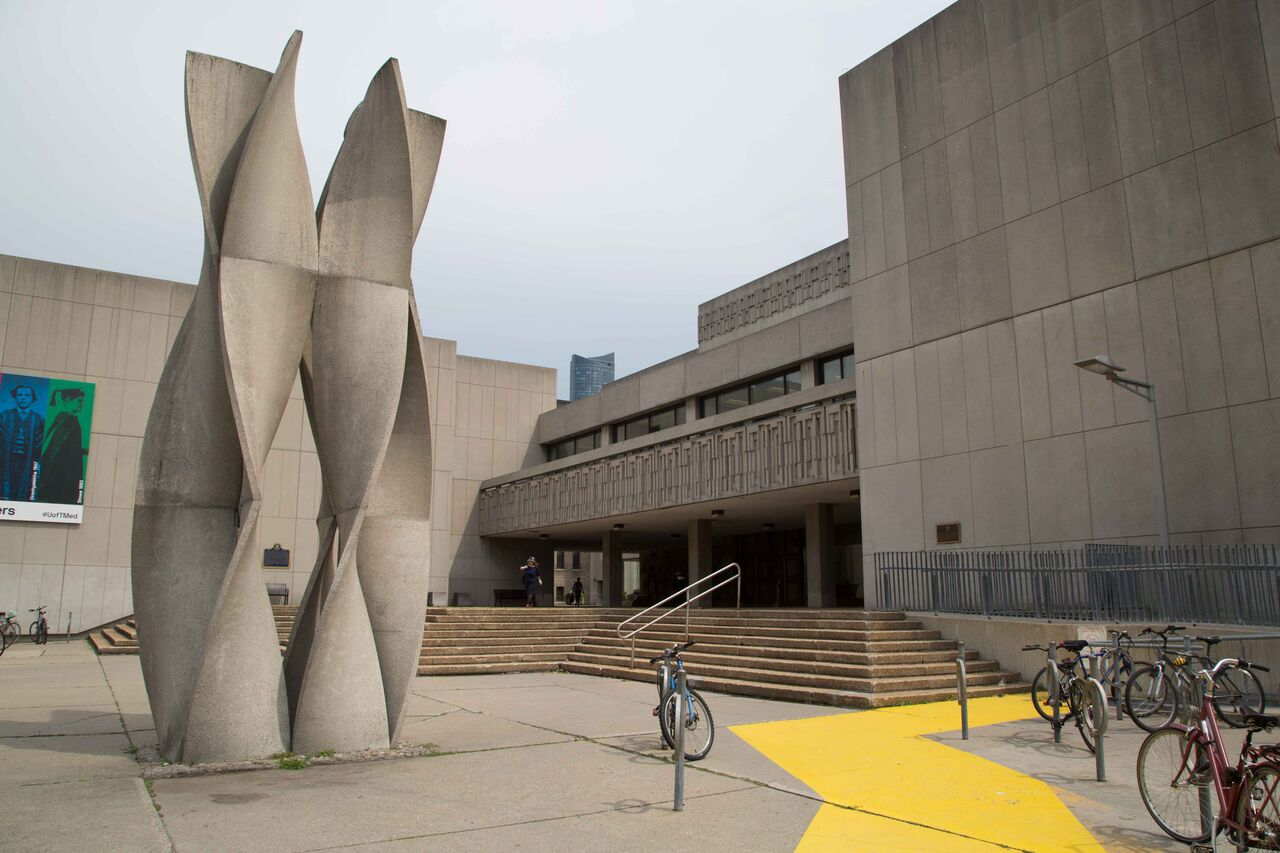
Faces of U of T Medicine: Women of 2T0 & 2T1
In honour of International Women's Day, MD students Yezarni Wynn and Asia van Buuren put together a campaign to celebrate some of their classmates.
The women featured in the profiles below were nominated by their classmates for their friendship, their passion, their commitment to their communities, and so much more.
CHLOE BROWN
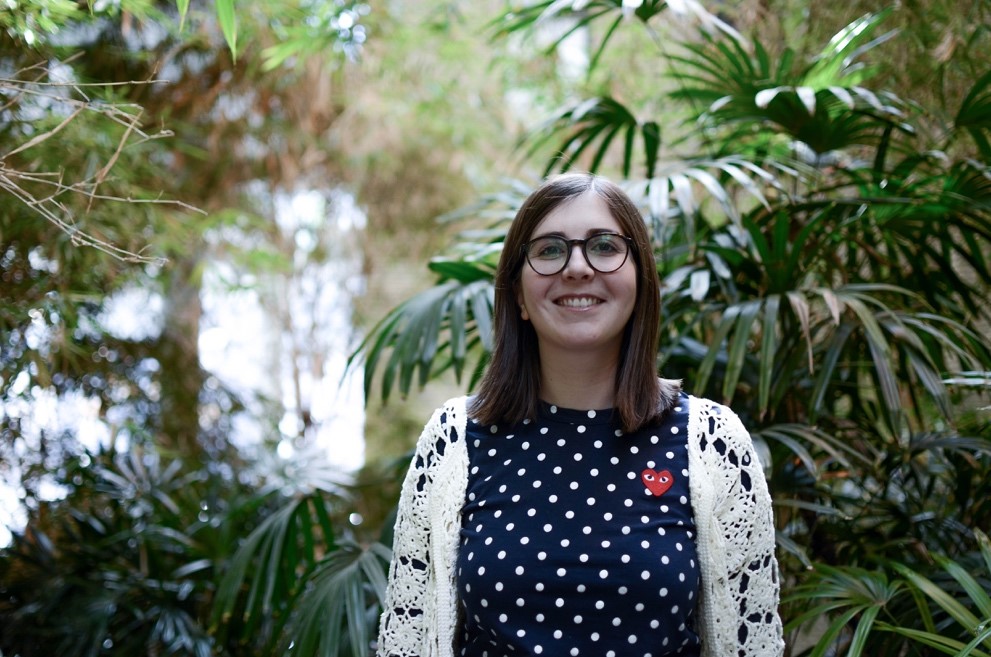 I was born in Toronto (and love it here!). I did my undergraduate degree in environmental studies at McGill in Montreal, and my masters in economic geography at Simon Fraser University in Vancouver. I spent the past 5 years working in the charity and social justice world, most recently working for an awesome charity called Community Food Centres Canada which works in food security, community building and social justice. My passion for public health and equity brought me to do a complete 180 in my life, applying to medical school in my late 20s and starting down career path number two. I brought my passion for social justice and advocacy to medical school, and am so happy to see such a strong community here. I'm currently the strategic lead for the Toronto Political Advocacy Committee, and the Local officer of Global Health Advocacy Jr. Outside of school, I'm passionate about food, family, crafts (knitting, crocheting, sewing, quilting), my perfect dog Maxie, and am newly married to a brilliant post-doc named Aaron (who lives in California).
I was born in Toronto (and love it here!). I did my undergraduate degree in environmental studies at McGill in Montreal, and my masters in economic geography at Simon Fraser University in Vancouver. I spent the past 5 years working in the charity and social justice world, most recently working for an awesome charity called Community Food Centres Canada which works in food security, community building and social justice. My passion for public health and equity brought me to do a complete 180 in my life, applying to medical school in my late 20s and starting down career path number two. I brought my passion for social justice and advocacy to medical school, and am so happy to see such a strong community here. I'm currently the strategic lead for the Toronto Political Advocacy Committee, and the Local officer of Global Health Advocacy Jr. Outside of school, I'm passionate about food, family, crafts (knitting, crocheting, sewing, quilting), my perfect dog Maxie, and am newly married to a brilliant post-doc named Aaron (who lives in California).
Who is a woman, within or outside of medicine, who has inspired you and why?
My mother is definitely a woman in medicine who has inspired me in so many ways. She's an Obstetrician Gynecologist at Michael Garron Hospital, and she's always been an amazing role model for me. She's the strongest person I know, and she's not too afraid to take charge in any situation. She's brilliant at what she does, and she also showed me how a woman can be passionate, work hard, and also have the family she desires. I could only hope to be as confident as her in my future career.
MEERA MAHENDIRAN
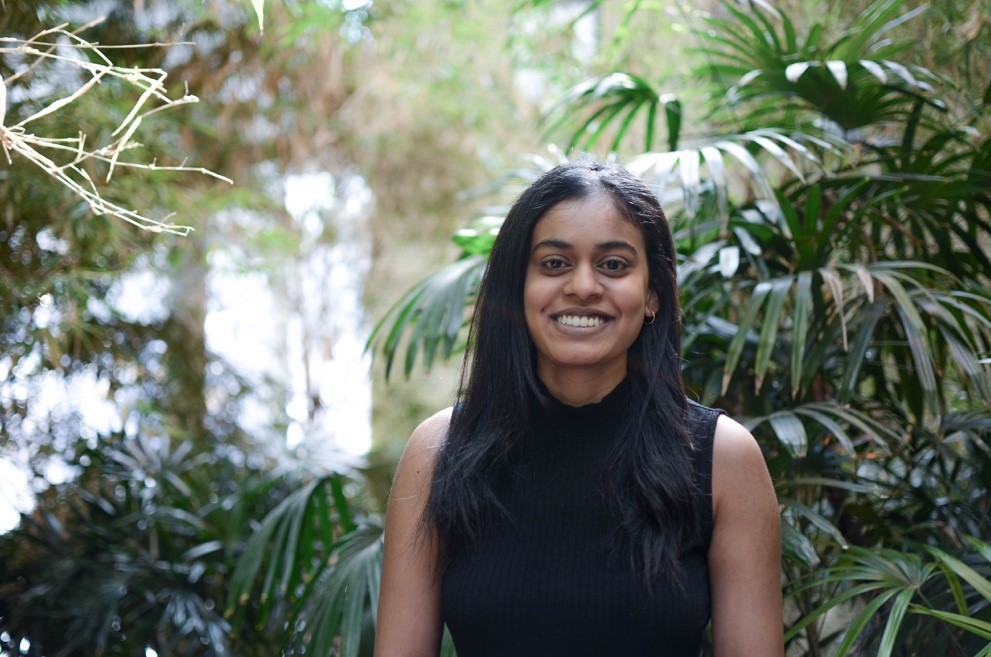 I’m originally from Scarborough and earned my undergraduate degree at UTSC where I majored in Neuroscience and Psychology and minored in Biology. Aside from my dad, my home has always been very estrogen-driven with my mom, two sisters, grandma (even my dog’s a female!) and my childhood was no different. I have always been surrounded by strong, compassionate female role models who had amazing careers and above all, were exceptional friends, sisters, mothers, and mentors. I realized then from a young age that women can have it all and as such, I have always been interested in women’s issues and celebrating my own womanhood. I am the editor and founder of UTSC’s The Women’s Issue, which is an online magazine that features stories from well-known female community figures, creative art submissions from the student body, and opinion pieces on various women’s issues from our student writers. Through this endeavor, I have always hoped to provide a platform for young women to express themselves and feel well-supported within their own campus culture and greater community.
I’m originally from Scarborough and earned my undergraduate degree at UTSC where I majored in Neuroscience and Psychology and minored in Biology. Aside from my dad, my home has always been very estrogen-driven with my mom, two sisters, grandma (even my dog’s a female!) and my childhood was no different. I have always been surrounded by strong, compassionate female role models who had amazing careers and above all, were exceptional friends, sisters, mothers, and mentors. I realized then from a young age that women can have it all and as such, I have always been interested in women’s issues and celebrating my own womanhood. I am the editor and founder of UTSC’s The Women’s Issue, which is an online magazine that features stories from well-known female community figures, creative art submissions from the student body, and opinion pieces on various women’s issues from our student writers. Through this endeavor, I have always hoped to provide a platform for young women to express themselves and feel well-supported within their own campus culture and greater community.
Tell us some of your thoughts about being a woman in medicine. For example, are there any challenges, any unique privileges?
Historically, women in medicine have had it tough- imposter syndrome, harassment, restricted scope of practice, just to name a few. And the sad reality is, while we have done a whole lot to eradicate these issues, there are still traces of them left. Yet, I feel that while being a South Asian female in medicine can be challenging, it’s also a privilege. I feel empowered that my personal identity exposes me to the unique circumstances patients face and allows me to connect to them in a profound manner. These challenges I’ve faced prevent me from turning a blind eye to many of the real issues faced by both beneficiaries and providers of health care and I’m grateful for it! It allows me to be both aware, motivated, and now, able to make real change.
MEGHAN KERR
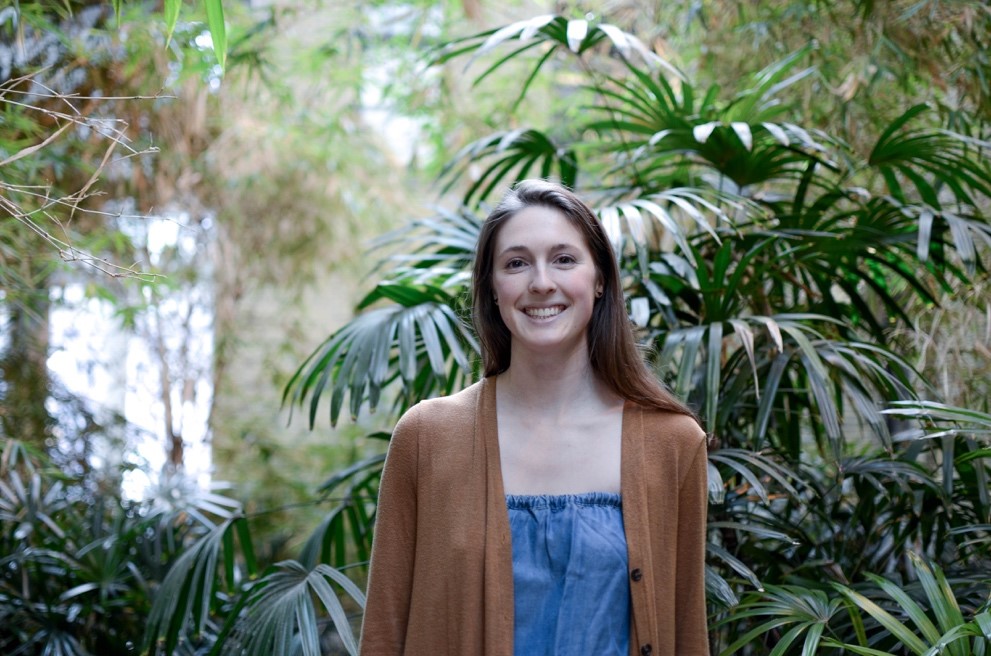 I grew up in Kingston, ON, but my parents always encouraged me to see more of the world. From a young age I was taught to focus on the simple things in life, to work hard, and to do good, and these values led me to pursue a career in medicine. Since beginning my studies at UofT I have sought out initiatives that are meaningful to me. One example is my role as the ITM/CPC-1 course committee representative, which enables me to collaborate with our dedicated faculty to optimize our curriculum as well as provide a voice for the 2T1 class. The Swimability program brings a lot of joy into my week and allows me to support the community in a small way by volunteering my time to teach swimming to children in need. Next year, I look forward to promoting sustainability in medicine as one of your future GreenMeds reps. Most importantly, I want to say how fortunate I am to be surrounded by supportive and inspiring women every day and I can’t wait to spend the next three years with all of you.
I grew up in Kingston, ON, but my parents always encouraged me to see more of the world. From a young age I was taught to focus on the simple things in life, to work hard, and to do good, and these values led me to pursue a career in medicine. Since beginning my studies at UofT I have sought out initiatives that are meaningful to me. One example is my role as the ITM/CPC-1 course committee representative, which enables me to collaborate with our dedicated faculty to optimize our curriculum as well as provide a voice for the 2T1 class. The Swimability program brings a lot of joy into my week and allows me to support the community in a small way by volunteering my time to teach swimming to children in need. Next year, I look forward to promoting sustainability in medicine as one of your future GreenMeds reps. Most importantly, I want to say how fortunate I am to be surrounded by supportive and inspiring women every day and I can’t wait to spend the next three years with all of you.
What is one reason you are grateful to be a woman in 2018?
I am grateful to be a woman in 2018 because wherever I turn, I can find strength in women past and present in my own life, my community, and around the world. Naomi Wolf, Eleanor Roosevelt, Michelle Obama, and (of course) my mother, to name a few, are unique and inspiring women breaking new ground and redefining what it means to be a woman. I only hope to be able to do my part in providing a platform for other women to speak their truth and enact change, so we may see a day when no person or society can tell a girl what she can or cannot do.
RENEE SHARMA
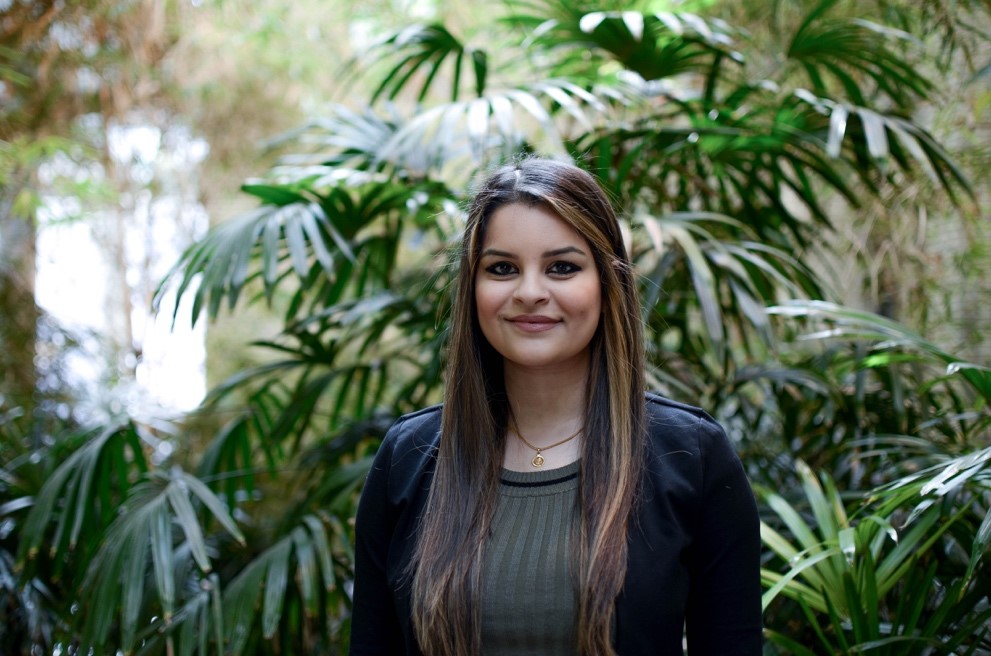 Oh hey, oh hey! It’s Renee! A bit about me: I was born and raised in Sauga. I did my undergraduate degree in Health Sciences at McMaster, and then travelled to Mizoram, India where I carried out a front-line evaluation of rural and remote malaria clinics. Inspired to address systemic health inequities, I pursued my MSc in Global Health and Development from University College London. Since completing my masters, I have been passionately involved in maternal and child health research, specifically around delivery and scale-up of essential interventions in resource-limited settings. As an intern and consultant for the WHO, I took part in evaluating and updating the WHO Guidelines on HIV and Infant Feeding. For the past 3 years, I have been a research assistant with the SickKids Centre for Global Child Health, where I have led an extensive portfolio of research priority-setting studies, book chapters, systematic reviews, and course development. Outside of research, I am an exec for the Trauma Medicine Interest Group, I love hanging out with my family and friends, I sing Indian classical music, and my favorite pastime is doing puzzles in my pajamas while watching Friends. Also, naps. Naps are great.
Oh hey, oh hey! It’s Renee! A bit about me: I was born and raised in Sauga. I did my undergraduate degree in Health Sciences at McMaster, and then travelled to Mizoram, India where I carried out a front-line evaluation of rural and remote malaria clinics. Inspired to address systemic health inequities, I pursued my MSc in Global Health and Development from University College London. Since completing my masters, I have been passionately involved in maternal and child health research, specifically around delivery and scale-up of essential interventions in resource-limited settings. As an intern and consultant for the WHO, I took part in evaluating and updating the WHO Guidelines on HIV and Infant Feeding. For the past 3 years, I have been a research assistant with the SickKids Centre for Global Child Health, where I have led an extensive portfolio of research priority-setting studies, book chapters, systematic reviews, and course development. Outside of research, I am an exec for the Trauma Medicine Interest Group, I love hanging out with my family and friends, I sing Indian classical music, and my favorite pastime is doing puzzles in my pajamas while watching Friends. Also, naps. Naps are great.
What is one reason you are grateful to be a woman in 2018?
Today, I am grateful to be part of a supportive sisterhood of powerful, badass goddesses whose wisdom and endless empathy gives me life. I am grateful that there exist more platforms than ever for us women to vocalize, validate, advocate, and celebrate our unique and collective struggles and achievements. Still, I recognize that not everyone has this privilege. Womanhood is complex, and our gender interacts with our other intersecting identities (i.e., race, sex, age, social class, faith, sexual orientation, disability), each associated with its own system of oppression or privilege, to uniquely influence our lived experiences. Although I feel powerful and grounded in my own womanhood, I am reminded that I continue to navigate a patriarchal system. As medical students and future physicians, it is crucial that we leverage our position of power to break down barriers and promote representation of marginalized voices.
JILLIAN MACKLIN
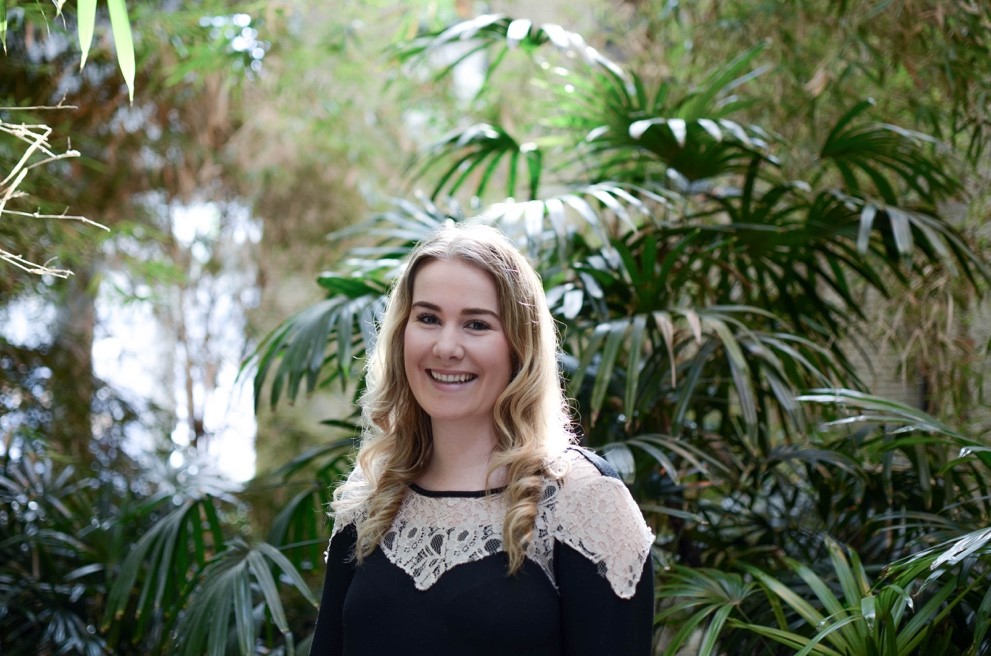 I’m Jillian, known as Jill to most. I’m in my first year of the combined MD/PhD program. I did my BMSc at Western and my MSc at UofT which really sparked my interest in pursuing my dual path. Growing up in Belleville, the city life of Toronto is quite upbeat and exciting, although I do miss the small town lovin’. In summary, I’m a life enthusiast. I’m a happy-go-lucky person who enjoys coffee a little too much and am always looking at a map to plan my next travel adventure. My short time in medicine at UofT has been nothing short of incredible. My hobby is people – meeting new people, learning from them, laughing with them, and loving them. Our class has allowed so many incredible people to enter my life. Since starting in September, I have kept busy pursuing multiple activities outside of the classroom. A defining experience for me was being the assistant director of our school musical, Daffydil. I encourage everyone to apply to our vibrant family next year! I have also been involved in a few homelessness initiatives here at UofT - working with the health promotion team of a student-led clinic and meeting with city councillors on our Lobby Day to make strides in implementing a homeless health tracking system. I’ve always been the athletic type – being a varsity badminton player at Western and carrying on to play as many intramurals as I can here with my class. In my off hours, I tend to ponder life and make plans for my PhD – in the realm of heart failure and quality of life is where it is pointing.
I’m Jillian, known as Jill to most. I’m in my first year of the combined MD/PhD program. I did my BMSc at Western and my MSc at UofT which really sparked my interest in pursuing my dual path. Growing up in Belleville, the city life of Toronto is quite upbeat and exciting, although I do miss the small town lovin’. In summary, I’m a life enthusiast. I’m a happy-go-lucky person who enjoys coffee a little too much and am always looking at a map to plan my next travel adventure. My short time in medicine at UofT has been nothing short of incredible. My hobby is people – meeting new people, learning from them, laughing with them, and loving them. Our class has allowed so many incredible people to enter my life. Since starting in September, I have kept busy pursuing multiple activities outside of the classroom. A defining experience for me was being the assistant director of our school musical, Daffydil. I encourage everyone to apply to our vibrant family next year! I have also been involved in a few homelessness initiatives here at UofT - working with the health promotion team of a student-led clinic and meeting with city councillors on our Lobby Day to make strides in implementing a homeless health tracking system. I’ve always been the athletic type – being a varsity badminton player at Western and carrying on to play as many intramurals as I can here with my class. In my off hours, I tend to ponder life and make plans for my PhD – in the realm of heart failure and quality of life is where it is pointing.
Who is a woman, within or outside of medicine, who has inspired you and why?
My forever inspiration is my Mom. My Mom is an incredible nurse and we have spent hours chatting about her interactions at the hospital and nursing home. She made me see medicine in a simple, yet heartfelt light. My Mom is always able to ground me back to an important value: the gift of human connection can go a long way. She made it known that as a healthcare worker we may not have gone through what the patient has gone through – granted, most times we have not. However, we can still connect on the fundamental level of emotion. You and the patient have both felt happiness. You both know what it is like to be sad. Or angry. Or scared. You can connect on that. You can help by just being present. You can remind them that they are important, and that their problem is worth listening to. My Mom takes the time to listen without judgement, and that is so admirable, especially to someone like me just starting their medical training. Finally, my Mom highlights that family and health should never be put on the back-burner. No matter how busy life gets, she always tells me ‘to go back to the basics’ and remember what to be thankful for. I love you, Mom.
ASIA VAN BUUREN
 I was born in Coquitlam, British Columbia and did my undergraduate degree at St. Francis Xavier University in Chemistry. Due to falling in love with small town living (and literally falling in love!), I stayed in Antigonish for two more years. I’m lucky enough to have two homes on the two opposite coasts! After graduation, I participated in the OceanPath Fellowship program during which I worked with an incredible community of artists with and without disabilities doing advocacy around inclusive decision-making. The next year, I worked at my university and did independent research looking at gaps in sexual education and sexual violence support services for people with disabilities in Nova Scotia. In these two years following my undergrad, I decided to pursue medicine with the hopes of continuing to advocate for underserved populations and being a part of system change. I’m super passionate about health equity, dismantling ableist attitudes, and reproductive justice which has led me to being involved in Social Justice in Medical Education, the Toronto Political Advocacy Committee as the outreach co-lead, the Local Officer of Reproductive and Sexual Health Jr., and sitting on class council. Nothing brings me more joy than being an auntie to three beautiful nephews and one golden retriever, being outdoors, swimming in the ocean, live concerts, and getting lost in a book.
I was born in Coquitlam, British Columbia and did my undergraduate degree at St. Francis Xavier University in Chemistry. Due to falling in love with small town living (and literally falling in love!), I stayed in Antigonish for two more years. I’m lucky enough to have two homes on the two opposite coasts! After graduation, I participated in the OceanPath Fellowship program during which I worked with an incredible community of artists with and without disabilities doing advocacy around inclusive decision-making. The next year, I worked at my university and did independent research looking at gaps in sexual education and sexual violence support services for people with disabilities in Nova Scotia. In these two years following my undergrad, I decided to pursue medicine with the hopes of continuing to advocate for underserved populations and being a part of system change. I’m super passionate about health equity, dismantling ableist attitudes, and reproductive justice which has led me to being involved in Social Justice in Medical Education, the Toronto Political Advocacy Committee as the outreach co-lead, the Local Officer of Reproductive and Sexual Health Jr., and sitting on class council. Nothing brings me more joy than being an auntie to three beautiful nephews and one golden retriever, being outdoors, swimming in the ocean, live concerts, and getting lost in a book.
What is one reason you are grateful to be a woman in 2018?
I am so grateful that as a woman I get to experience sisterhood. I am so privileged to have such a strong network of women as friends, mentors, and family all over the world who I carry with me despite our geographical distance. I have witnessed the deep connection that women have to each other, some of us through our experiences pushing for space in male-dominated fields, others through experiencing motherhood. It’s hard to explain, but the transformation that occurs when women come together, whether in movements, in song, or in our work, is I think one of the deepest privileges of being a woman. My powerhouse mama once told me that when women speak their truth, they move mountains. I believe that nothing is more transformative than a woman standing in her power and I am so grateful that I get to continue to witness this in the women around me in solidarity, and in myself as I start to discover the power of my own voice.
YIFAN YANG
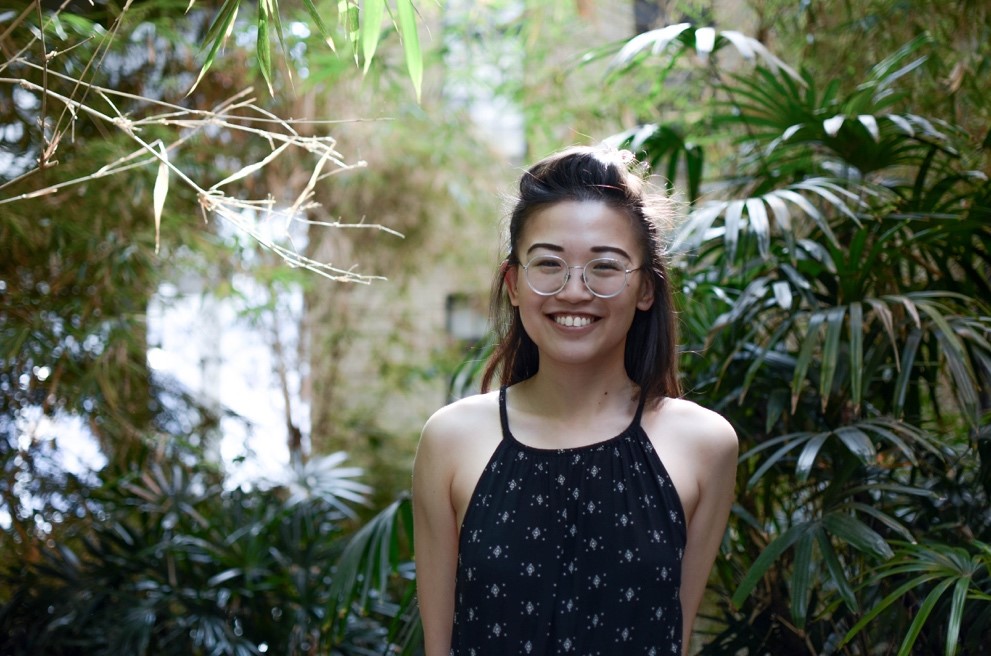 I grew up in Mississauga, and completed my undergrad at McMaster University. It was there that I found my love for musical theatre and performance. Since coming to U of T, I pursued my interests in performance through my involvement with the 2018 Daffydil production. Through Daffy, I witnessed talent and kindness beyond anything I could imagine, and I urge anyone who has even the smallest inkling of interest to join next year. In my free time, Yifan enjoys indulging in good food, and photographing our beautiful city. I love to try new things and take risks out of my comfort zone. In fact, just the other day, I was inspired by the talents of the Daffy dance team to try a beginner ballet class which I will continue to attend. My life motto is to say yes to things. Down for anything, really, as long as it doesn’t involve cardio.
I grew up in Mississauga, and completed my undergrad at McMaster University. It was there that I found my love for musical theatre and performance. Since coming to U of T, I pursued my interests in performance through my involvement with the 2018 Daffydil production. Through Daffy, I witnessed talent and kindness beyond anything I could imagine, and I urge anyone who has even the smallest inkling of interest to join next year. In my free time, Yifan enjoys indulging in good food, and photographing our beautiful city. I love to try new things and take risks out of my comfort zone. In fact, just the other day, I was inspired by the talents of the Daffy dance team to try a beginner ballet class which I will continue to attend. My life motto is to say yes to things. Down for anything, really, as long as it doesn’t involve cardio.
Tell us some of your thoughts about being a woman in medicine. For example, are there any challenges, any unique privileges?
Now, more than any other point in history, women have been empowered to pursue traditionally male-dominated fields, and medicine is no exception. However, even though the numbers have balanced out in incoming classes, there are still some unique challenges to being a woman in medicine. One in particular I’ve been confronted with is a shared concern by some female classmates, myself included, on how to reconcile the length of training in certain specialties with their desire to have a child. It’s extremely discouraging to me that brilliant female minds are second-guessing specialties that they have such a passion and talent for. This is a complex issue and I don’t have the answers, but it’s a huge issue that I, and so many other classmates face. However, with challenges also come with unique privileges. Through shadowing as well as personal experience as a patient, I’ve learned that being a female physician gives me a unique set of lived experiences with which I can advocate on behalf of my patients. I’ve had the opportunity in my short time here so far to meet so many amazing female physicians who have fostered such a trusting and empowering relationship with their patients. Leveraging my experiences to better relate to my patients is something I definitely want to incorporate in the rest of my training, and my practice, regardless of what discipline I end up pursuing.
SALY HALAWA
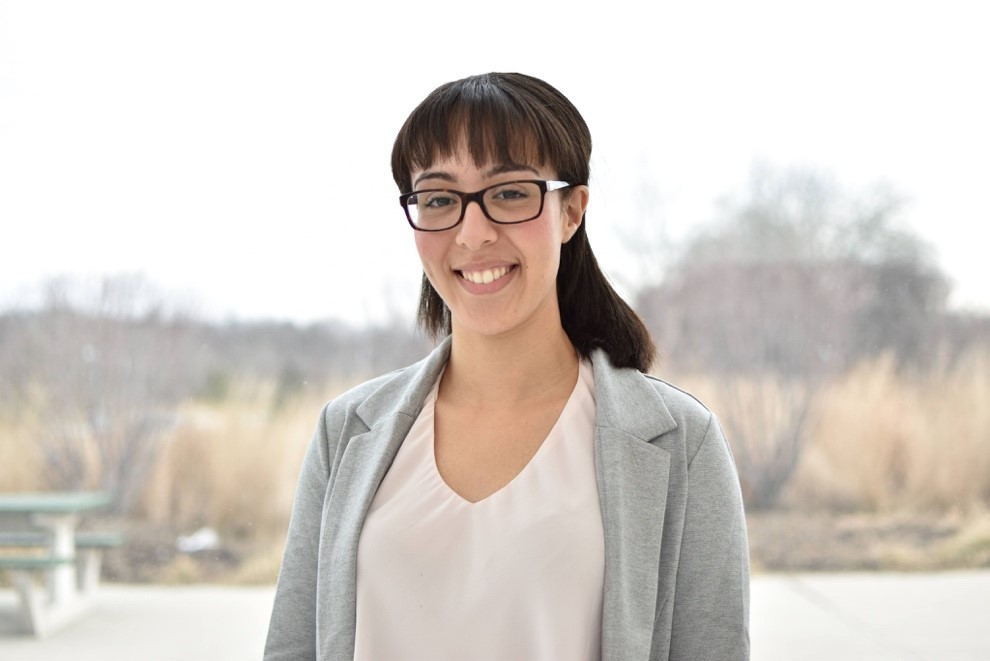 I'm a first year medical student in the Mississauga Academy of Medicine! Previously, I completed the Health Sciences Program at McMaster University with a minor in French. Despite my short-lived time at U of T, I can't imagine being anywhere else! Not only am I able to live in my home in Vaughan where I have the constant support of family through the challenging transition to medical school but I am able to have the best of both worlds with endless opportunities offered at both U of T campuses! I've been able to carry forward many of my interests from undergrad including pursuing French as part of the Communite Francais, get involved in supporting knowledge translation as part of the UTMJ and continue my passion for research as a CREMS student. Just as important, the flexibility of the Foundations curriculum has encouraged me to seek balance between my academics, social life and physical well-being.
I'm a first year medical student in the Mississauga Academy of Medicine! Previously, I completed the Health Sciences Program at McMaster University with a minor in French. Despite my short-lived time at U of T, I can't imagine being anywhere else! Not only am I able to live in my home in Vaughan where I have the constant support of family through the challenging transition to medical school but I am able to have the best of both worlds with endless opportunities offered at both U of T campuses! I've been able to carry forward many of my interests from undergrad including pursuing French as part of the Communite Francais, get involved in supporting knowledge translation as part of the UTMJ and continue my passion for research as a CREMS student. Just as important, the flexibility of the Foundations curriculum has encouraged me to seek balance between my academics, social life and physical well-being.
Tell us some of your thoughts about being a woman in medicine. For example, are there any challenges, any unique privileges?
As a woman in medicine, I am increasingly recognizing the challenge of pursuing my personal interests and responsibilities with ambitious career aspirations concurrently. However, I have been fortunate to encounter numerous female role models who have empowered me and instilled a sense of determination in continuing to balance these competing demands and ultimately work towards addressing challenges unique to women in medicine.
HAYEONG RHO
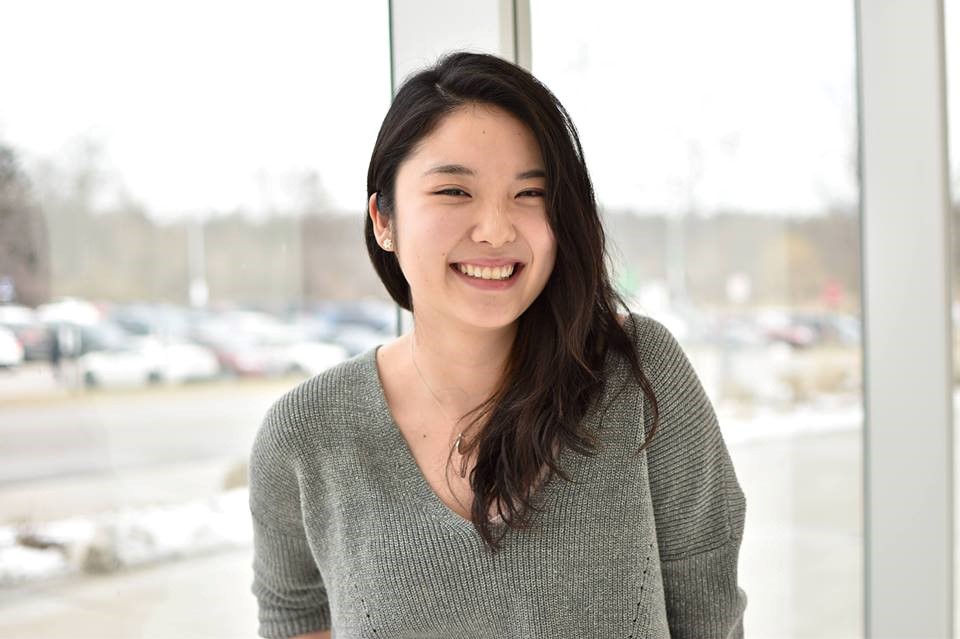 I'm a second-year medical student at University of Toronto. I am passionate about healthcare accessibility and equity, and inclusivity and diversity in Canada. I believe in health as a human right, and advocate for addressing social determinants of health with local, national and international grassroot organizations. I'm super excited and honoured to be nominated for this campaign, and will continue to collaborate with my amazing colleagues in the community to build a sustainable, truly universal healthcare system.
I'm a second-year medical student at University of Toronto. I am passionate about healthcare accessibility and equity, and inclusivity and diversity in Canada. I believe in health as a human right, and advocate for addressing social determinants of health with local, national and international grassroot organizations. I'm super excited and honoured to be nominated for this campaign, and will continue to collaborate with my amazing colleagues in the community to build a sustainable, truly universal healthcare system.
Tell us some of your thoughts about being a woman in medicine. For example, are there any challenges, any unique privileges?
I believe that privilege comes in a broad intersectional spectrum. It’s important to acknowledge one’s privilege in a diverse society like Canada. It has always been a challenge for me to position myself as an effective ally to non-dominant groups, while I exercise my privilege as a visible ‘model’ (traditionally conforming) minority woman from a middle-income immigrant family. As a medical learner and future healthcare provider, I will prioritize further development of cultural competency and become an effective health advocate, all the while hoping that my privileges do not blind me from understanding my patients’ experiences and challenges.
KAITLIN SIOU
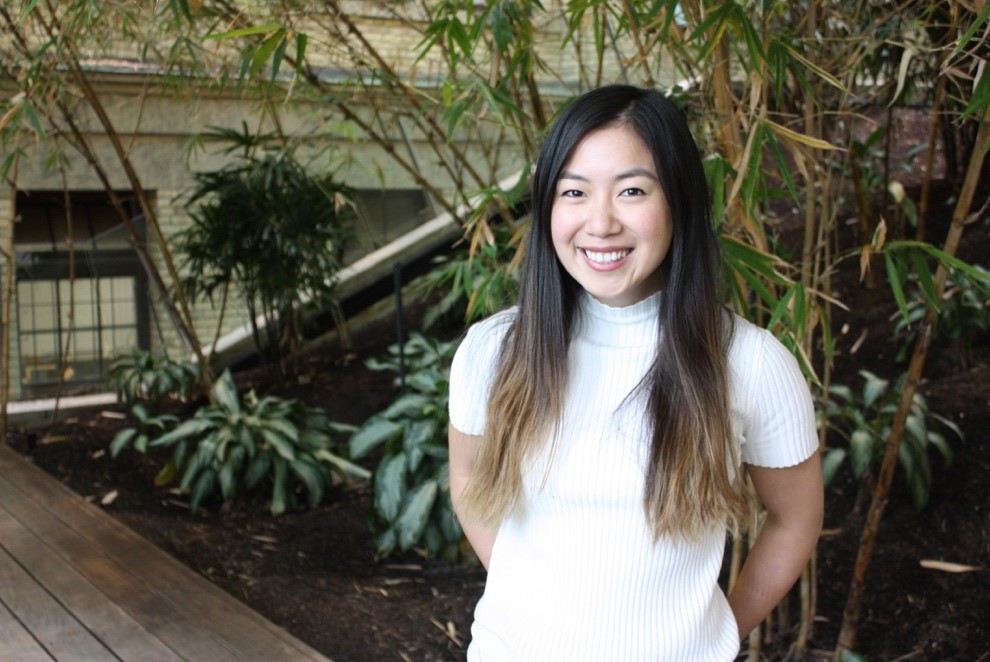 I have a background in engineering and value the intersection between systems-level thinking and broader healthcare improvement. I am the Co-President of the Interprofessional Healthcare Students’ Association (IPHSA), an organization that represents 13 healthcare professions and develops interprofessional education, health policy, community outreach, and social events. I have led new initiatives including implementing an interprofessional suicide intervention workshop to provide healthcare students with actionable ways to help others with burnout, depression, and suicidal ideation. I work with medical faculty leads to design and implement changes in the Toronto Centre for Interprofessional Education curriculum. In the broader community, I volunteer my time at the student-run IMAGINE clinic and leading the Toronto Brain Tumour 5K Walk for the Canadian Brain Tumour Foundation. I have worked with community members to bring notable public figures including Toronto mayor John Tory to speak at the event. This city fundraiser continues to raise over $200,000 every year for brain tumour research, education, and patient support.
I have a background in engineering and value the intersection between systems-level thinking and broader healthcare improvement. I am the Co-President of the Interprofessional Healthcare Students’ Association (IPHSA), an organization that represents 13 healthcare professions and develops interprofessional education, health policy, community outreach, and social events. I have led new initiatives including implementing an interprofessional suicide intervention workshop to provide healthcare students with actionable ways to help others with burnout, depression, and suicidal ideation. I work with medical faculty leads to design and implement changes in the Toronto Centre for Interprofessional Education curriculum. In the broader community, I volunteer my time at the student-run IMAGINE clinic and leading the Toronto Brain Tumour 5K Walk for the Canadian Brain Tumour Foundation. I have worked with community members to bring notable public figures including Toronto mayor John Tory to speak at the event. This city fundraiser continues to raise over $200,000 every year for brain tumour research, education, and patient support.
Who is a woman, within or outside of medicine, who has inspired you and why?
There are so many brilliant, kind, and courageous women in the world who inspire me but this International Women’s day, I’d like to honour my mother. Always curious and inquisitive, she challenged me to reflect critically about societal issues and to take an active role within it. At a young age, she had to learn how to be resourceful, resilient, and independent. The differences in our experiences growing up are always a reminder for me to reflect on my own biases, and to be humble and curious to other ideas and experiences. Thanks mom – it is from you that I get my values and my desire to contribute in the world.
CHIKA STACY ORIUWA
 I am a second-year medical student, completing my MD/MSc with a concentration in System Leadership and Innovation. As a professional spoken word artist, I've worked under the Hamilton Youth Poets, and earned my place as a national slam poetry finalist twice. I've keen interest in healthcare reform pertaining to the intersections of race and gender within medicine. My resolve has compelled me to remain proactive in the mentorship of youth in minority communities. For these reasons, I enjoy my roles as co-president of the U of T Black Medical Students Association, co-founder of the Black Interprofessional Students Association (BIPSA), and co-director of a non-profit youth leadership organization called uFLOW. I am currently an ambassador for the Black Students Application Program at U of T's Faculty of Medicine, and sit on the External Implementation Steering Committee to the Minister of Child and Youth Services assisting with the Ontario Black Youth Action Plan. In addition to studying with plans to be contribute to medical reform, I hope to use my background in performance poetry and public speaking to engage marginalized youth.
I am a second-year medical student, completing my MD/MSc with a concentration in System Leadership and Innovation. As a professional spoken word artist, I've worked under the Hamilton Youth Poets, and earned my place as a national slam poetry finalist twice. I've keen interest in healthcare reform pertaining to the intersections of race and gender within medicine. My resolve has compelled me to remain proactive in the mentorship of youth in minority communities. For these reasons, I enjoy my roles as co-president of the U of T Black Medical Students Association, co-founder of the Black Interprofessional Students Association (BIPSA), and co-director of a non-profit youth leadership organization called uFLOW. I am currently an ambassador for the Black Students Application Program at U of T's Faculty of Medicine, and sit on the External Implementation Steering Committee to the Minister of Child and Youth Services assisting with the Ontario Black Youth Action Plan. In addition to studying with plans to be contribute to medical reform, I hope to use my background in performance poetry and public speaking to engage marginalized youth.
Who is a woman, within or outside of medicine, who has inspired you and why?
"When you see me passing,
It ought to make you proud.
I say,
It’s in the click of my heels,
The bend of my hair,
the palm of my hand,
The need for my care.
’Cause I’m a woman
Phenomenally.
Phenomenal woman,
That’s me"
-excerpt from Phenomenal Woman, by Maya Angelou
I am continuously inspired by, and live my life through the teachings of Dr. Maya Angelou. Dr. Angelou was a poetic icon, civil rights activist, writer, performer, public speaker and healer of the soul. She embodies the virtue of Black femininity and dismantles constructs of race and gender respectability; she was a staunch defendant of Black culture and women's rights. As a poet, I look to her body of literature in awe and inspiration- I draw upon her words for solace. As a medical student, I look to her wisdom for reassurance, as she has taught me how to engage everyone with compassion and understanding. She reminded us that love is the antidote to hate, forgiveness is paramount, and our similarities surmount our differences. Dr. Maya Angelou was unapologetically Black and feminine, and she has taught me what it means to embrace my identity without fear or reservation.
VICTORIA REEDMAN
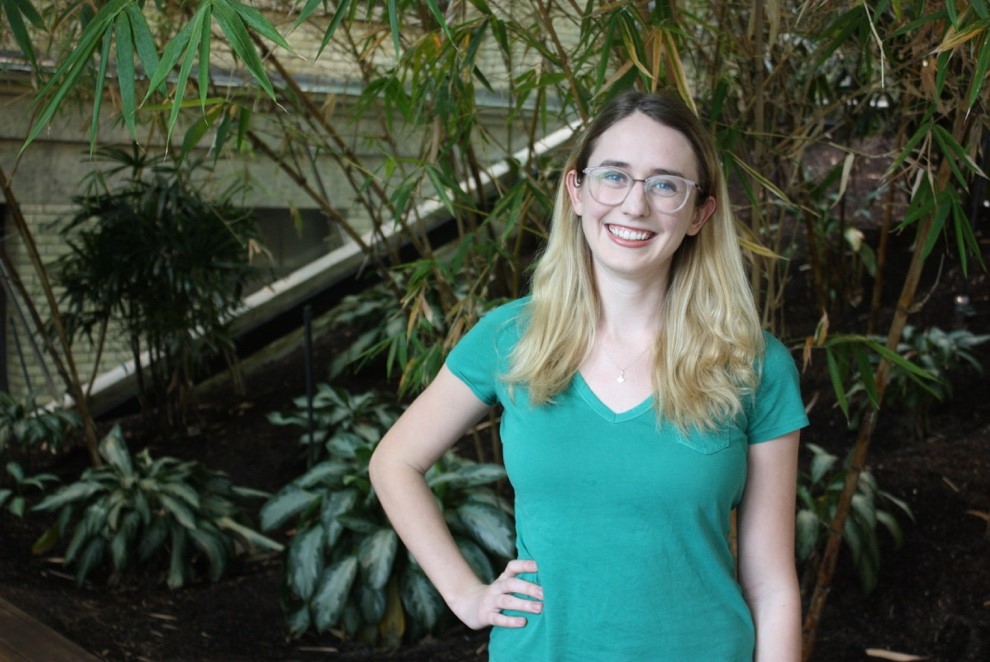 I'm a budding reader, amateur pop-philosopher, feminist, golden retriever aunt, and sibling of four. I hail from Owen Sound Ontario. I'm the VP External Sr. on the U of T Medical Society and represent U of T medical
I'm a budding reader, amateur pop-philosopher, feminist, golden retriever aunt, and sibling of four. I hail from Owen Sound Ontario. I'm the VP External Sr. on the U of T Medical Society and represent U of T medical
students provincially and nationally.
What is one reason you are grateful to be a woman in 2018?
I am so proud to be a woman in 2018 because of the unprecedented courage, strength, and unity women have shown. This is the year of whistle blowing on sexual harassment and not accepting less than fairness. I was a skeptic, but I think "#MeToo" really did make a difference. Special thanks is owed to the women of history who broke the glass ceilings and to women with intersectional identities who fight twice as hard. I have no doubt we will continue to be honest, brave, and unapologetic because the fight is far from over. Still we rise.
MAGGIE McCAAN
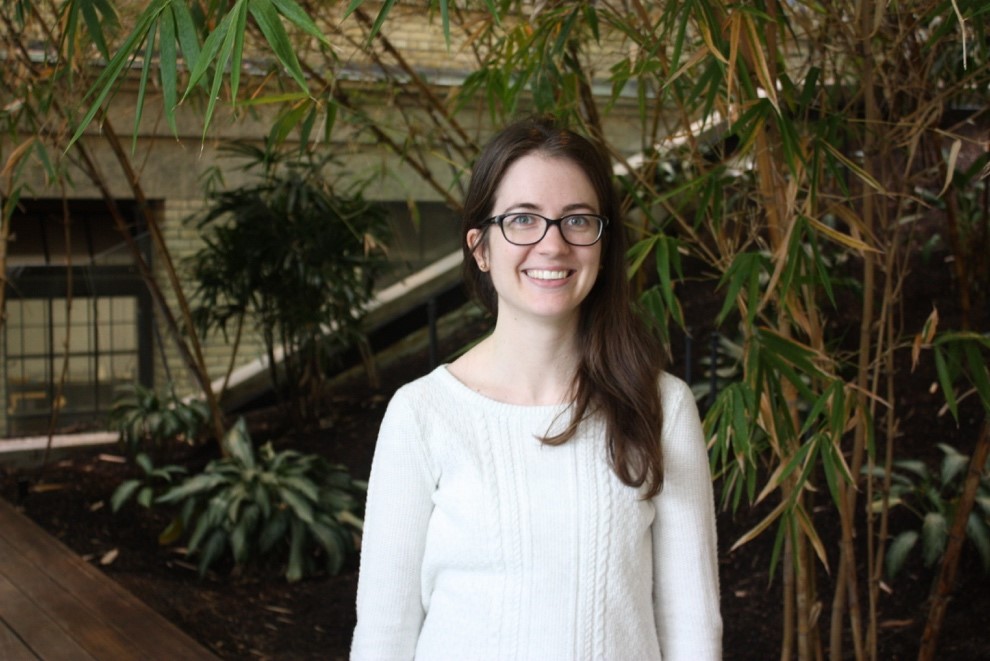 I completed my Bachelor of Health Sciences (Honours) at McMaster University and my Masters of Public Health at the University of Guelph. Previous work experience includes being employed as an epidemiologist at the Public Health Agency of Canada, working as a Teaching Assistant throughout my Masters degree and working as a pharmacy assistant at a methadone clinic. For the past year, I have been volunteering at the IMAGINE clinic, a student run interprofessional clinic that provides healthcare services to people who are uninsured or homeless, as the clinic flow manager. I am currently conducting research at St. Michael’s Hospital on shared decision making interventions for people with diabetes. My interests in healthcare include population health, preventative medicine and serving vulnerable populations.
I completed my Bachelor of Health Sciences (Honours) at McMaster University and my Masters of Public Health at the University of Guelph. Previous work experience includes being employed as an epidemiologist at the Public Health Agency of Canada, working as a Teaching Assistant throughout my Masters degree and working as a pharmacy assistant at a methadone clinic. For the past year, I have been volunteering at the IMAGINE clinic, a student run interprofessional clinic that provides healthcare services to people who are uninsured or homeless, as the clinic flow manager. I am currently conducting research at St. Michael’s Hospital on shared decision making interventions for people with diabetes. My interests in healthcare include population health, preventative medicine and serving vulnerable populations.
What is one reason you are grateful to be a woman in 2018?
One reason I am grateful to be a woman in 2018 is because I have the opportunity to learn as a medical student and be supported by a community of women who are intelligent, compassionate, and innovative mentors and peers. This opportunity has not always been afforded to women, and in much of the world is still not a reality. I am humbled and inspired by the opportunities I have been granted, and hope to be able to use my position of privilege to support other women in their ability to have the same choices and opportunities I have been provided.
KAYLA SLISKOVIC
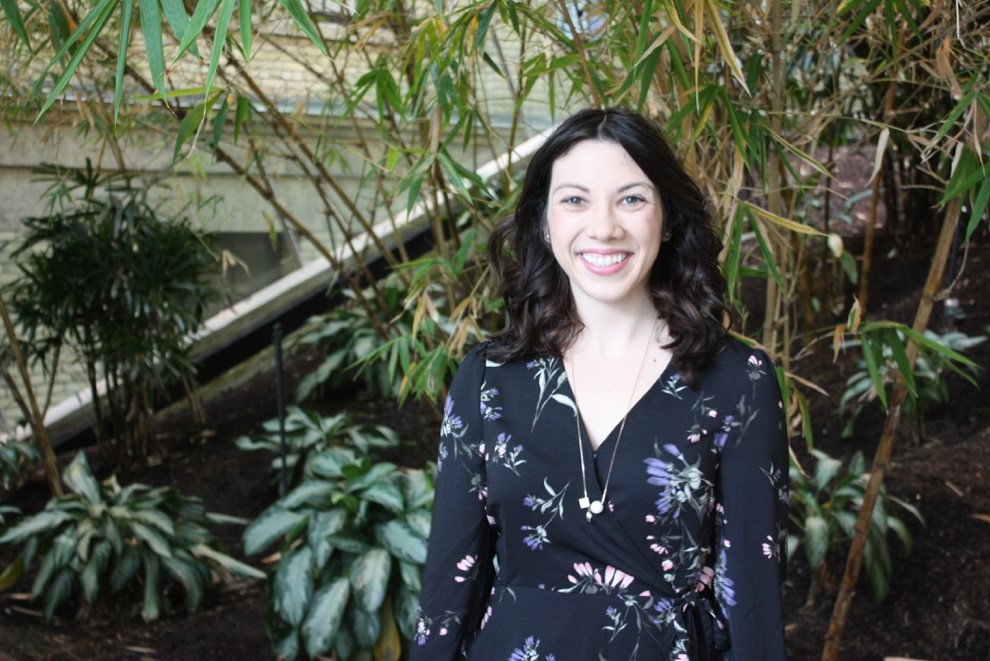 My name is Kayla and I’m originally from London (Ontario), though I’ve also called Montréal and Melbourne home. I’m an older sister, a Paediatric Intensive Care Nurse, and the kind of friend who is always happy to get on a streetcar, train, or plane to visit loved ones near and far. In addition to being in my second year at UofT, I am the incumbent Medical Society President and a student representative on the Peters-Boyd Academy Council. Outside of school I am a Peer Mentor with the Peer Project, a bookworm, an avid traveler, and a slow, but determined runner.
My name is Kayla and I’m originally from London (Ontario), though I’ve also called Montréal and Melbourne home. I’m an older sister, a Paediatric Intensive Care Nurse, and the kind of friend who is always happy to get on a streetcar, train, or plane to visit loved ones near and far. In addition to being in my second year at UofT, I am the incumbent Medical Society President and a student representative on the Peters-Boyd Academy Council. Outside of school I am a Peer Mentor with the Peer Project, a bookworm, an avid traveler, and a slow, but determined runner.
Tell us some of your thoughts about being a woman in medicine. Are there any challenges? Any unique privileges?
This is an incredible and important time to be a woman in medicine. There are many changes, transitions, evolutions and revolutions taking place, which are made possible by countless inspiring women. I feel privileged and grateful, as well as accountable for discovering my passion and channeling it into meaningful action. This means, that as a woman in medicine, my biggest challenging is remaining honest and compassionate with myself in this search for who I am, who I want to be, and how I want to make a difference in the lives of others.
It is all too easy to be overwhelmed by the demands of school, the pervasive anxiety surrounding clerkship, electives, the match, residency and beyond, by the relentless evaluations and assessments, and by a culture of endless competition. It is all too easy to be dismayed and discouraged by continued sexism in medicine where women more frequently receive unsolicited advice to prioritize our reproductive planning regardless of our own goals and interests, where statistics about the disproportionately higher divorce rates of female physicians are emphasized by speakers, where women are more likely to be called “sweetie” or “hun” than our names, and where certain specialties are still known to be boys clubs. It is all too easy to be daunted by the immense responsibilities we are taking on to provide the best care for others, to further research, to make access to care equitable and timely, to empower people to achieve their best health, to advocate, to do everything and be everything.
CLAIRE ROLLANS
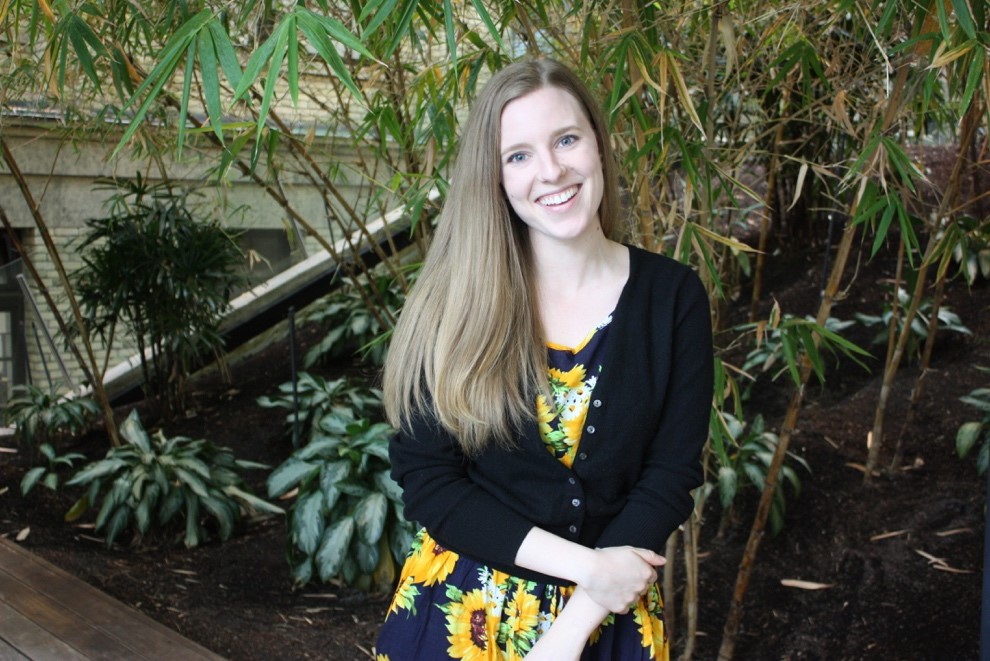 I grew up in Edmonton, Alberta knowing two things: I loved singing, and I wanted to become a doctor. These two things have never changed. Before coming to the University of Toronto, I completed a BA & MSc degree at McGill University in neuroscience and linguistics, and furthered my studies at the University of Alberta with an MSc in Rehabilitation Science. During this time, I continued to pursue my love of music as the Vice President of the McGill Savoy Society, and as an executive member in Edmonton’s Kokopelli Choir. Now at the University of Toronto, I am actively involved in several medical school organizations. I am the co-director of the Healing Tonics choir, the Senior Co-Executive for Out in Medicine, and this year I acted as Vocal Lead for the 107th Daffydil production. Additionally, I was accepted into the MSc program in System’s Leadership and Innovation, where I continue to develop my skills as a future physician leader.
I grew up in Edmonton, Alberta knowing two things: I loved singing, and I wanted to become a doctor. These two things have never changed. Before coming to the University of Toronto, I completed a BA & MSc degree at McGill University in neuroscience and linguistics, and furthered my studies at the University of Alberta with an MSc in Rehabilitation Science. During this time, I continued to pursue my love of music as the Vice President of the McGill Savoy Society, and as an executive member in Edmonton’s Kokopelli Choir. Now at the University of Toronto, I am actively involved in several medical school organizations. I am the co-director of the Healing Tonics choir, the Senior Co-Executive for Out in Medicine, and this year I acted as Vocal Lead for the 107th Daffydil production. Additionally, I was accepted into the MSc program in System’s Leadership and Innovation, where I continue to develop my skills as a future physician leader.
Who is a woman, within or outside of medicine, who has inspired you and why?
I have been fortunate to know many women in medicine and academia who inspire me. One who really stands out is Dr. Pauline Pariser. Dr. Pariser is a Family Physician who is the co-founder and Lead Physician of the Taddle Creek Family Health Team. She is also the Mid-West Sub-Region Primary Care Lead for the Toronto Central LHIN and the SCOPE Physician Lead at UHN. Not only is she an incredibly caring and brilliant clinician who has previously been voted the best family physician in Toronto, but she is also a change-maker in the medical community. For example, in her role as the co-coordinator for the Mid-West Toronto Health Link, she led workshops for homeless people seeking care and training sessions for physicians willing to take on marginalized patients. I admired her the minute I met her. She is incredibly intelligent, dedicated, motivated, charismatic, and giving. She is also committed to helping a new generation of young docs get into the leadership game. From the get-go she has been willing to offer me advice, let me tag along to meetings, and tell me about her own journey. She is the kind of physician I aspire to be someday, and is the perfect example of what women in medicine can accomplish.
KARA H., INNA B., & PATRICIA H.
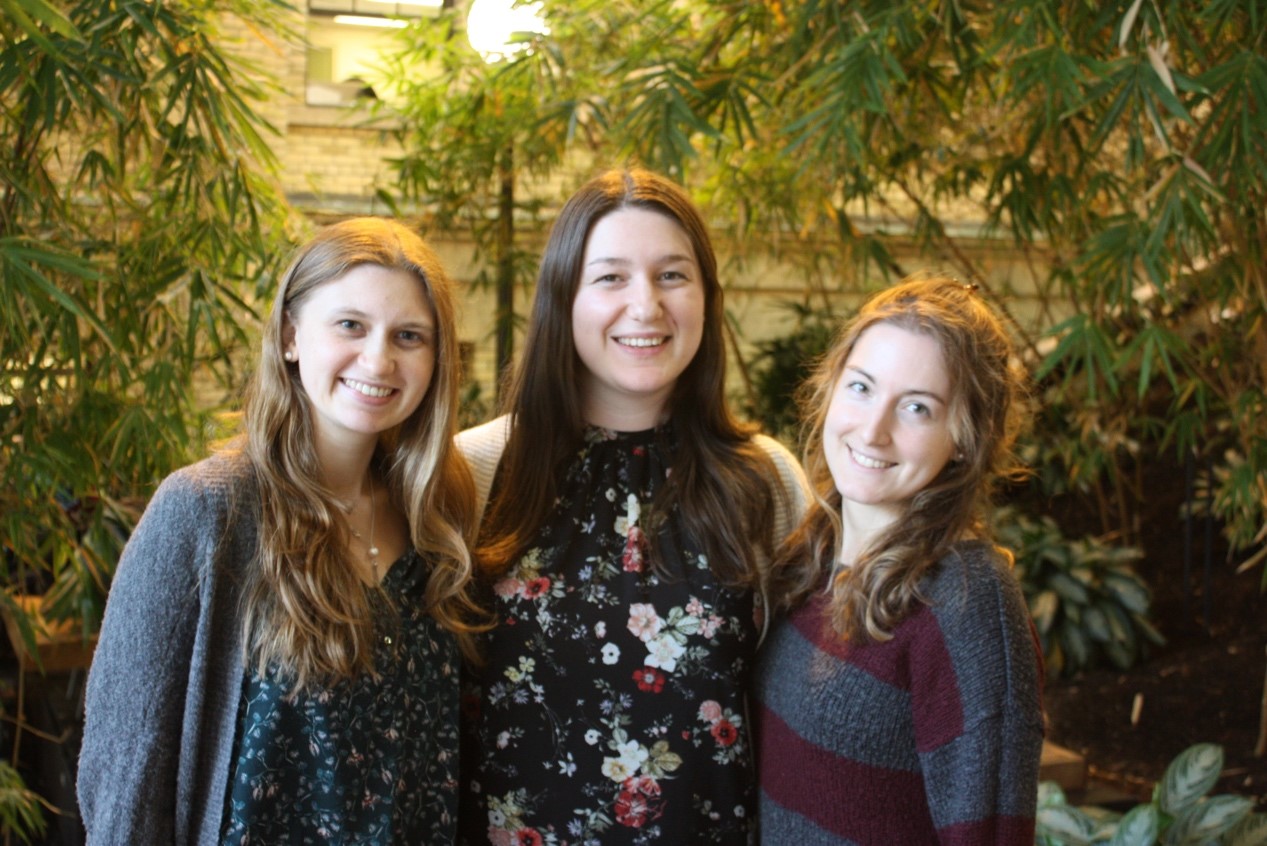 We are Kara Hounsell, Patricia Hoyeck and Inna Berditchevskaia, 2nd year students in the MD Program. This past year, we had the chance to establish the Toronto Political Advocacy Committee (TPAC) as a homelessness student advocacy group, and work to turn an idea for a municipal lobby day into real change in the city. We’re currently asking the city to look into an information management system, an ask that 30 students spoke with 10 city councillors about. Along the way, we’ve been inspired by countless female leaders – from homeless and formerly homeless activists, to healthcare providers on the front lines to leaders within the city (both on political and administrative sides), we’ve seen strong women refuse to accept the status quo and strive to achieve positive change. We have also leaned on one another more times than we can count, and benefited from the support of peers, including some absolutely incredible women. Through this experience, and all its ongoing ups and downs, we’ve definitely seen the strength that we all have!
We are Kara Hounsell, Patricia Hoyeck and Inna Berditchevskaia, 2nd year students in the MD Program. This past year, we had the chance to establish the Toronto Political Advocacy Committee (TPAC) as a homelessness student advocacy group, and work to turn an idea for a municipal lobby day into real change in the city. We’re currently asking the city to look into an information management system, an ask that 30 students spoke with 10 city councillors about. Along the way, we’ve been inspired by countless female leaders – from homeless and formerly homeless activists, to healthcare providers on the front lines to leaders within the city (both on political and administrative sides), we’ve seen strong women refuse to accept the status quo and strive to achieve positive change. We have also leaned on one another more times than we can count, and benefited from the support of peers, including some absolutely incredible women. Through this experience, and all its ongoing ups and downs, we’ve definitely seen the strength that we all have!
Who is a woman, within or outside of medicine, who has inspired you and why?
There are so many women who have inspired us along this journey! Councillor Kristyn Wong-Tam, whom we met with as part of the Lobby Day, inspired us by all of her advocacy and social justice work. Jo Connelly, the executive director of the Inner City Family Health Team, inspired us through her genuine care for individuals experiencing homelessness in Toronto and her dedication to educating students, opening the TPAC delegation’s eyes to the realities faced by individuals experiencing homelessness. Finally, Maya Angelou’s work has inspired us when we encountered roadblocks; the quote that spoke volumes to us was “Do the best you can until you know better. Then when you know better, do better.”
Photography by: Mollie Sivaram, Yifan Yang & Kimberly Young.

Optimize this page for search engines by customizing the Meta Title and Meta Description fields.
Use the Google Search Result Preview Tool to test different content ideas.

Select a Meta Image to tell a social media platform what image to use when sharing.
If blank, different social platforms like LinkedIn will randomly select an image on the page to appear on shared posts.
Posts with images generally perform better on social media so it is worth selecting an engaging image.

Foundations Curriculum Student Experience Blog: The Blanket Exercise
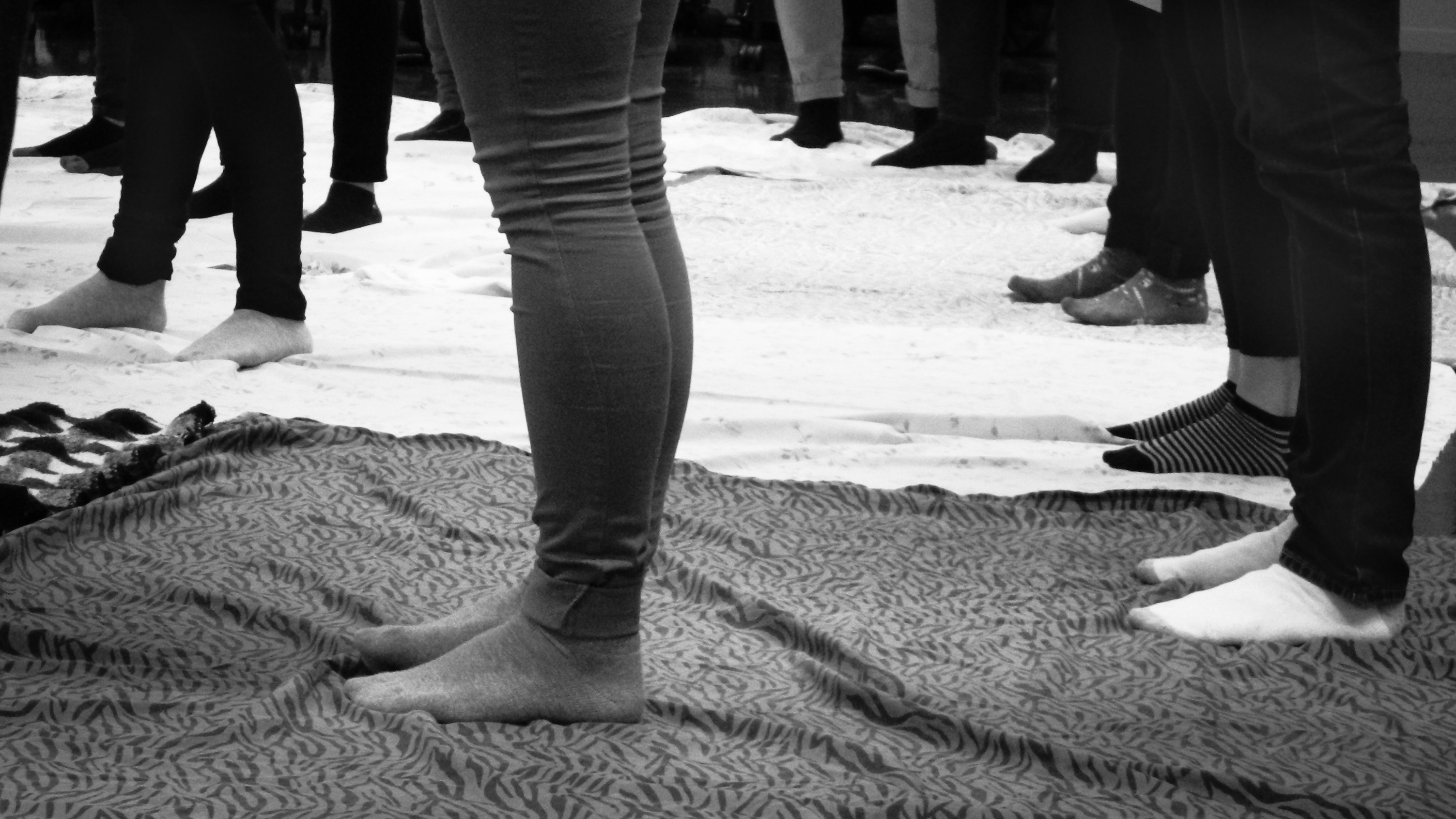 Last week, I had the amazing experience of completing the blanket exercise with my classmates in Mississauga. The exercise is an interactive learning experience that teaches Indigenous history. While standing on blankets representing the lands that Indigenous peoples have lived on since time immemorial, we learned about 500 years’ worth of history from an Indigenous perspective.
Last week, I had the amazing experience of completing the blanket exercise with my classmates in Mississauga. The exercise is an interactive learning experience that teaches Indigenous history. While standing on blankets representing the lands that Indigenous peoples have lived on since time immemorial, we learned about 500 years’ worth of history from an Indigenous perspective.
Over the first hour, we saw how European colonizers, unfamiliar diseases and colonialist policies decimated the Indigenous population and then tucked Indigenous peoples into tiny, largely unprofitable land tracts called reserves. For me, this exercise was hugely emotional and intellectually challenging.
Before medical school, I lived and worked in Saskatchewan and Manitoba, in and out of Indigenous communities. There never was a moment when I didn’t see their presence physically, spiritually and politically.
But when I was growing up in Kitchener-Waterloo, I didn’t have much interaction with Indigenous people or exposure to their perspectives beyond fundraising in my church for the youth in Attawapiskat and history lessons about Indigenous and settler clashes.
The blanket exercise hammered home how oblivious I have been to Indigenous people and allowed me and my classmates to begin preparing to serve them as future healthcare providers.
It was especially striking to see how much harm Indigenous people have felt through a loss of connection with their land. As an immigrant, my relationship with the place I call home is complicated — this isn’t where my ancestors are from, but I don’t feel I fully belong where they lived, either. It can be difficult for me to contemplate a connection to land so deep, far beyond what I can imagine. The blanket exercise allowed us to experience a tiny, tiny bit of the emotional devastation felt by Indigenous people who were torn from the land their ancestors have called home for forever.
As a Canadian and a future physician, I think this exercise will help me grow in ways that will allow me to better serve Indigenous people in my medical practice. One of the things that makes the Foundations Curriculum so striking is how it acknowledges how much our health is impacted by factors outside of the control of physicians. History, intergenerational trauma and ongoing struggles and sacrifices will have had long-lasting impacts on many of my Indigenous patients. It’s important that, as a medical student, I acknowledge that. As a physician, I will have opportunities to advocate with these same people and communities for better.
My classmates and I completed our blanket exercise, but perhaps what I should have said is that we began to deepen our understanding. I hope that the thoughts and reflections inspired by the experience lead to an ongoing search for reconciliation.

Optimize this page for search engines by customizing the Meta Title and Meta Description fields.
Use the Google Search Result Preview Tool to test different content ideas.

Select a Meta Image to tell a social media platform what image to use when sharing.
If blank, different social platforms like LinkedIn will randomly select an image on the page to appear on shared posts.
Posts with images generally perform better on social media so it is worth selecting an engaging image.
Sanasi Jayawardena, Class of 2T0

Faces of U of T Medicine: Maneesha Rajora
What’s the focus of your research?
My project focuses on the development of new nano- and micron-sized materials to deliver drugs to brain tumours. Currently, there’s no cure for glioblastomas, which are highly invasive brain tumours. One of the challenges is the blood-brain barrier (BBB), which prevents many drugs from reaching the brain and tumour cells. I’m trying to take advantage of properties unique to nano- and micron-sized particles to either bypass or transiently disrupt the BBB. This will allow me to enhance the delivery of otherwise impermeable drugs to brain tumours, ultimately opening the door to more therapeutic options for glioblastoma. Specifically, I’m trying to enhance the delivery of organic light-activated drugs called porphyrins, for targeted cancer phototherapy.
What interested you in pursuing this area of research?
During my undergraduate degree, I was drawn to the fields of synthetic and materials chemistry. I was enthralled by chemists’ abilities to apply fundamental scientific knowledge to create new molecules, materials and platforms that could impact the way diseases were treated and diagnosed. I really enjoy the creative design process and puzzle-solving that goes into materials development. The ability to engineer new materials from scratch that have potentially very real positive impacts on patients is extremely exciting!
What did receiving the Mr. Robert and Ms. Francine Ruggles Innovation Award mean to you?
This recognition was humbling and motivating. I’m surrounded by brilliant MD/PhD colleagues conducting impactful research. I was honoured to be chosen among such worthy candidates. Having trained in chemistry before entering the program, I have a traditionally unconventional research background and project. It was encouraging to see this diversity in research recognized, which I hope will reassure and motivate others pursuing their passion for biomedical research, regardless of their educational background or scientific discipline of interest.
What drew you to the MD/PhD program?
I was drawn to the quality of training I could receive through the U of T MD/PhD program as I pursued my goal of becoming a clinician-scientist. This ambition was shaped by my undergraduate and Master’s training. I did my undergraduate thesis project with clinician-scientist Professor Donald Weaver. His dedication to improving patient care through research and ability to navigate the space between clinical care and basic science sparked my interest in clinical medicine and inspired me to further pursue biomaterials research with Professor Paul Santerre for my Master’s degree. In the Santerre lab, I developed a passion for translational research and established my goal of combining this interest with practicing clinical medicine. The MD/PhD program is an ideal ground to explore my immediate scientific curiosity while staying in touch with the driving motivation of improving patient care. I saw, and continue to see, the MD/PhD program and a clinician-scientist career as a gratifying way of having a positive impact at an individual patient and family level, and more broadly to all patients affected by scientists’ biomedical interests.
What’s your favourite thing about the MD/PhD program?
The support within the MD/PhD program at U of T, whether its in the form of resources or people, is phenomenal. It grants trainees like myself with truly protected research time without being limited to field or time of study, which allows me to freely explore my scientific interests and get the most out of my PhD training. Most importantly, the program gives us a family of colleagues and mentors we can rely on for support through the ups and downs of what is a very dynamic and lengthy training program.
Where do you see yourself in 15 years?
The goal of becoming a clinician-scientist is alive and strong! In 15 years, I hope to be practicing as an academic clinician while leading a research team toward the development of materials that can either be applied directly for disease management, or be used as platforms to answer pertinent questions in medicine.
What do you enjoy doing in your spare time?
Outside the lab, I enjoy life chats with family and friends, engaging in mentorship and dancing, which has been an important part of my life since for as long as I can remember. I’ve been involved in Daffydil and the med Bollywood dance team as a dancer and choreographer over the last four years, and look forward to performing again in this year’s Daffy production! To be able to share my joy of dance with my family and friends in a way that also gives back to the community is special.

Optimize this page for search engines by customizing the Meta Title and Meta Description fields.
Use the Google Search Result Preview Tool to test different content ideas.

Select a Meta Image to tell a social media platform what image to use when sharing.
If blank, different social platforms like LinkedIn will randomly select an image on the page to appear on shared posts.
Posts with images generally perform better on social media so it is worth selecting an engaging image.
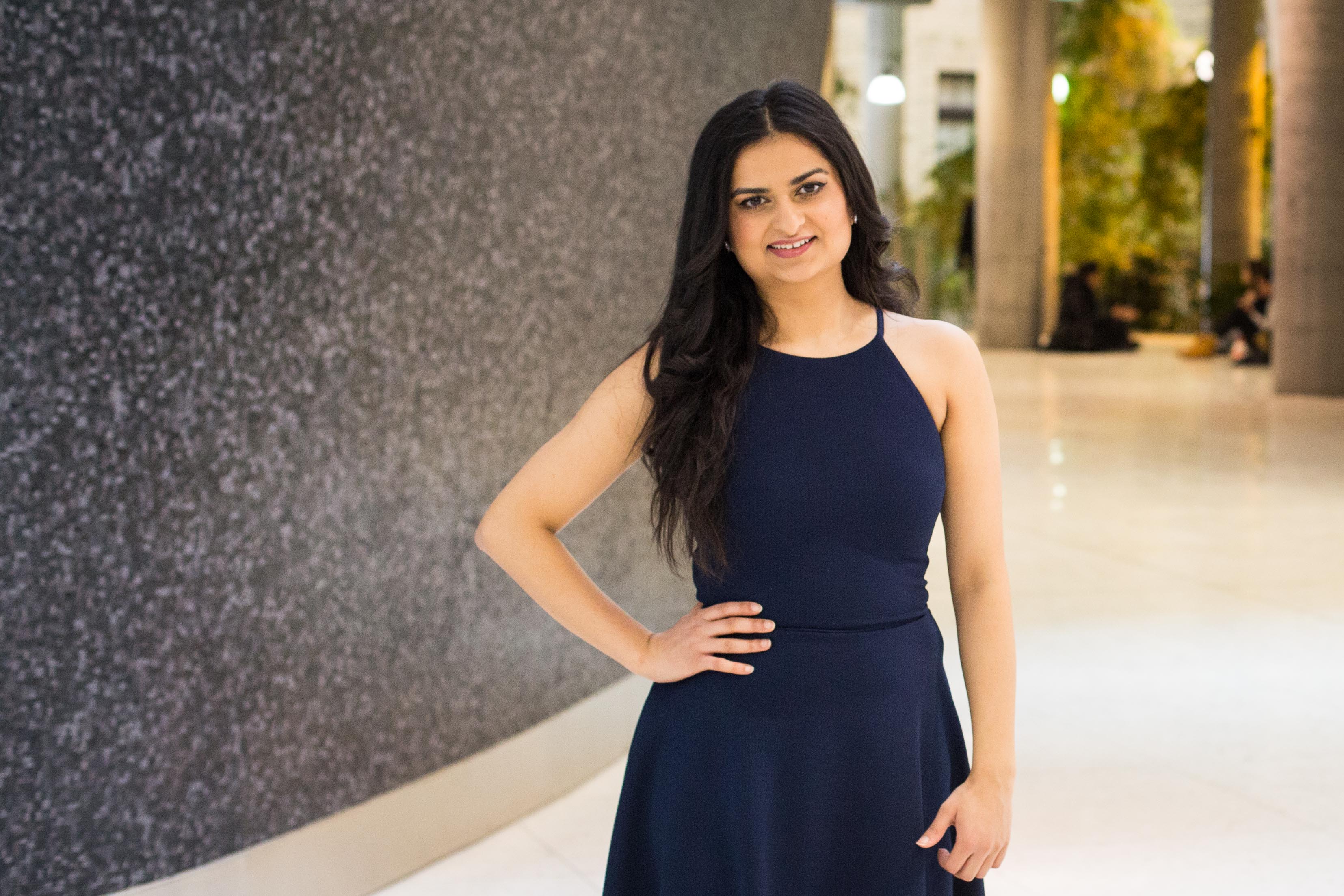
These Students are Patient Advocates
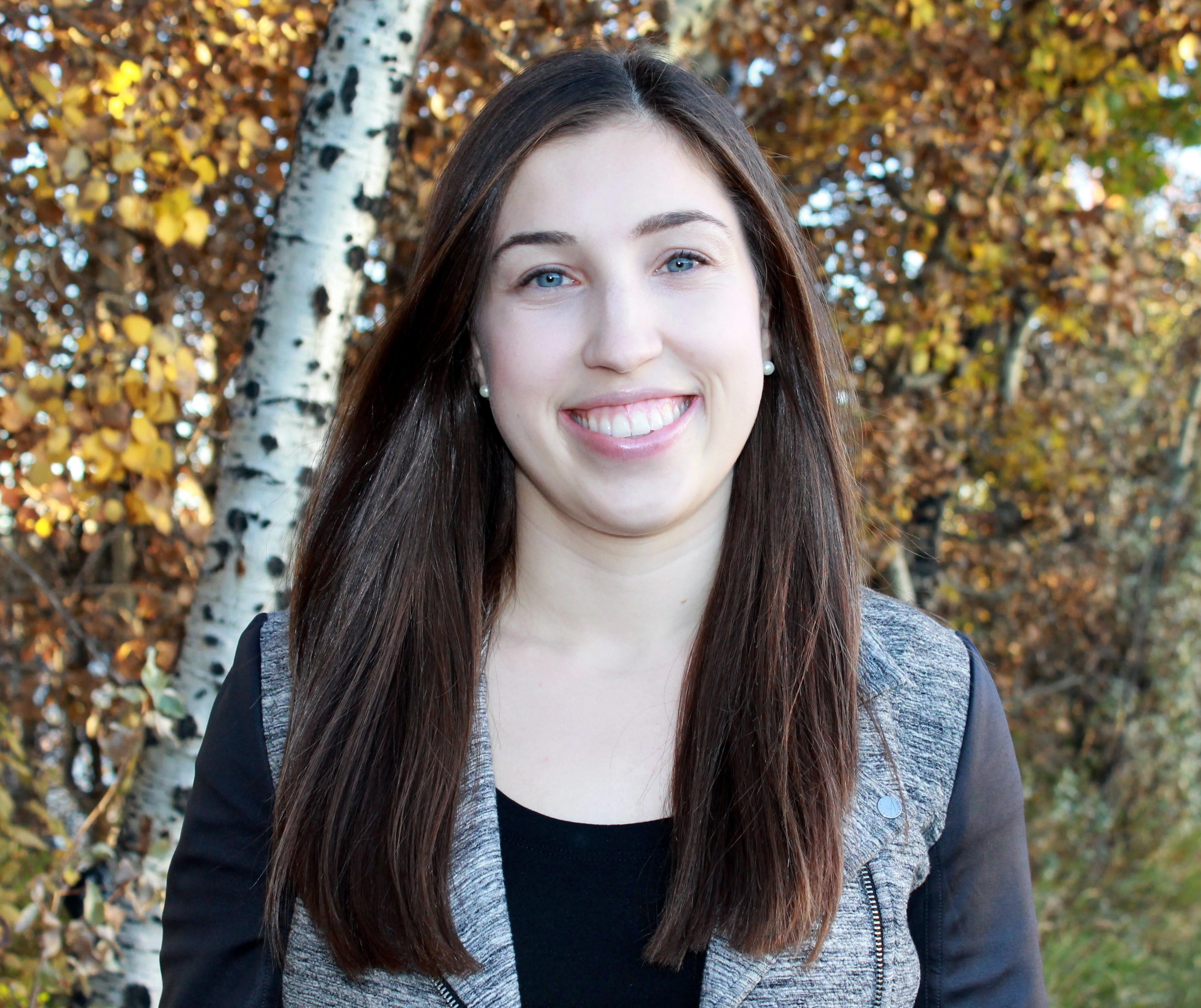 Megan Woolner was a third-year medical student at the University of Toronto when she met Anahita [not her real name], a recent immigrant from Iran who had come to the family medicine clinic at North York General Hospital. The patient had signs of major depression, and when she returned to the clinic three weeks later, this time without her husband, Woolner began to think her symptoms were linked to social isolation and loneliness.
Megan Woolner was a third-year medical student at the University of Toronto when she met Anahita [not her real name], a recent immigrant from Iran who had come to the family medicine clinic at North York General Hospital. The patient had signs of major depression, and when she returned to the clinic three weeks later, this time without her husband, Woolner began to think her symptoms were linked to social isolation and loneliness.
Anahita spent most days at home alone with her two toddlers while her husband worked or cared for his ailing mother. Woolner and the care team at NYGH started Anahita on anti-depressant medication, referred her to a Farsi-speaking therapist and gave her a culturally sensitive list of local health resources.
But Anahita was most excited about starting a Farsi-speaking mother's group — an idea floated by Woolner's supervisor, who had herself found a mother’s group pivotal to her mental health. They set a date for the group's first meeting and promoted it in the neighbourhood with a Farsi-English poster. The day of the meeting they had received no RSVPs, and Woolner was glum as she waited in the clinic with Anahita.
Suddenly the elevator doors opened. "In came this mother with a stroller and a smile from ear to ear. I was so relieved," says Woolner, now in her last year of medical school. Two more mothers showed up. “When I saw my patient a few weeks later, the difference was night and day. She was well put together, confident and starting to make her own social connections. It was a really big change."
Woolner’s work was part of an ‘advocacy project,’ which some U of T medical students do during clerkship (the first two years of medical school are class-based; in the last two ‘clerkship’ years, students start to see patients in clinics). All medical students learn about social determinants of health such as income, ethnicity and education, but those doing an advocacy project devise an intervention to address them in a real patient.
Advocacy projects have been part of the family medicine clerkship program since 2014. Last year, fifty-five students did one, about 20 per cent of the medical school’s third-year cohort. For students in traditional ‘block’ clerkships, who rotate through different medical specialties every six weeks, advocacy projects are optional. They’re mandatory for students who have chosen longitudinal integrated clerkships (in which students learn multiple specialities at once and follow patients over several months).
In one advocacy project, a student negotiated reduced rates with physiotherapy offices near the home of a low-income patient with an ankle injury, after she learned the patient had no coverage. Another student made a list of resources for an autism patient’s family, who were struggling to find and understand local services.
“We’ve seen some amazing projects that really make a difference in people’s lives,” says Professor Azadeh Moaveni, director of undergraduate medical education in the Department of Family and Community Medicine. “And they help students think about the social context — where patients come from, where and how they live and get around, the systems that surround them and influence health.”
Some students also advocate for broader changes at the community or provincial level to deal with social determinants of health. One wrote a letter to an MPP in his home province of Nova Scotia about the importance of giving the HPV vaccine to boys. He later met with the politician, and a few months later Nova Scotia became the first Maritime province to extend free coverage for the vaccine to boys.
Moaveni says students can find the projects strike a nerve for them, and that supervisors sometimes have to temper students’ expectations and limit time spent on the projects. All students who do an advocacy project give an oral presentation and write a reflection on their experience; some develop a more reflective approach to their interaction with other patients.
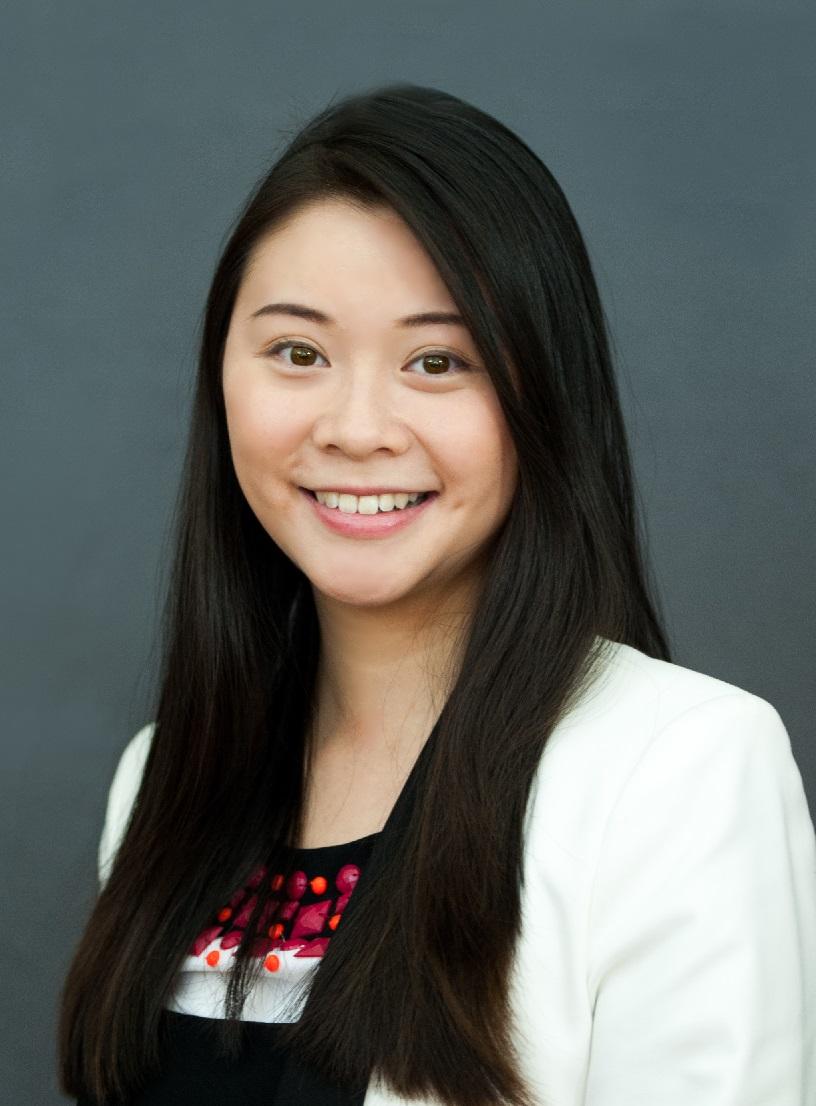 Cheryl Young was a block clerk at the St. Michael’s Academic Family Health Team at St. James Town Health Centre. There she met a working mother and student with a problem she hadn’t previously considered a barrier to health care: access to child care. The woman had depression and was struggling to make her medical and therapy appointments, so Young drew up a list of government services and city-funded child care options — some of which the patient couldn’t access because she hadn’t filed taxes recently.
Cheryl Young was a block clerk at the St. Michael’s Academic Family Health Team at St. James Town Health Centre. There she met a working mother and student with a problem she hadn’t previously considered a barrier to health care: access to child care. The woman had depression and was struggling to make her medical and therapy appointments, so Young drew up a list of government services and city-funded child care options — some of which the patient couldn’t access because she hadn’t filed taxes recently.
“It opened my eyes to several issues,” says Young. “Now when I’m doing a patient history, I’m more likely to ask about access to health care, child care, time lost from work and if they’ve filed taxes in the last year. Many marginalized patients miss out on benefits and services that can improve their health.”
Young and Woolner will present their advocacy project experiences at the Family and Community Medicine undergraduate education faculty development workshop on January 19, 2018.

Optimize this page for search engines by customizing the Meta Title and Meta Description fields.
Use the Google Search Result Preview Tool to test different content ideas.

Select a Meta Image to tell a social media platform what image to use when sharing.
If blank, different social platforms like LinkedIn will randomly select an image on the page to appear on shared posts.
Posts with images generally perform better on social media so it is worth selecting an engaging image.
Jim Oldfield


